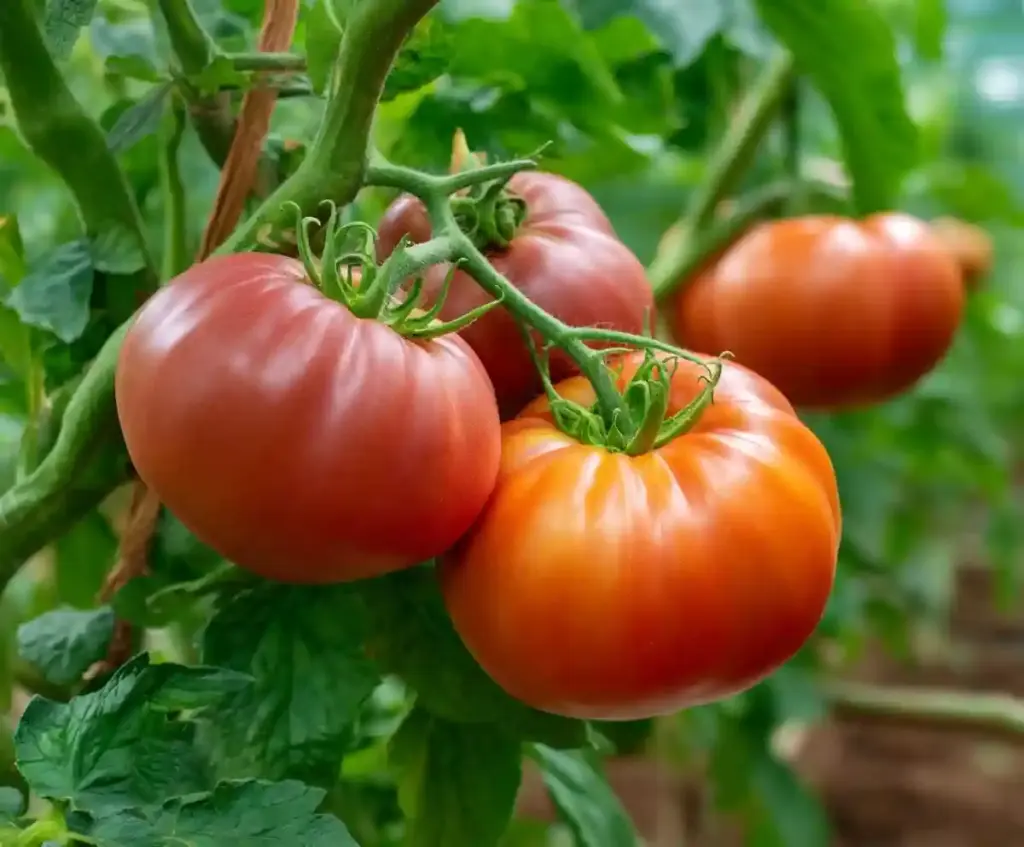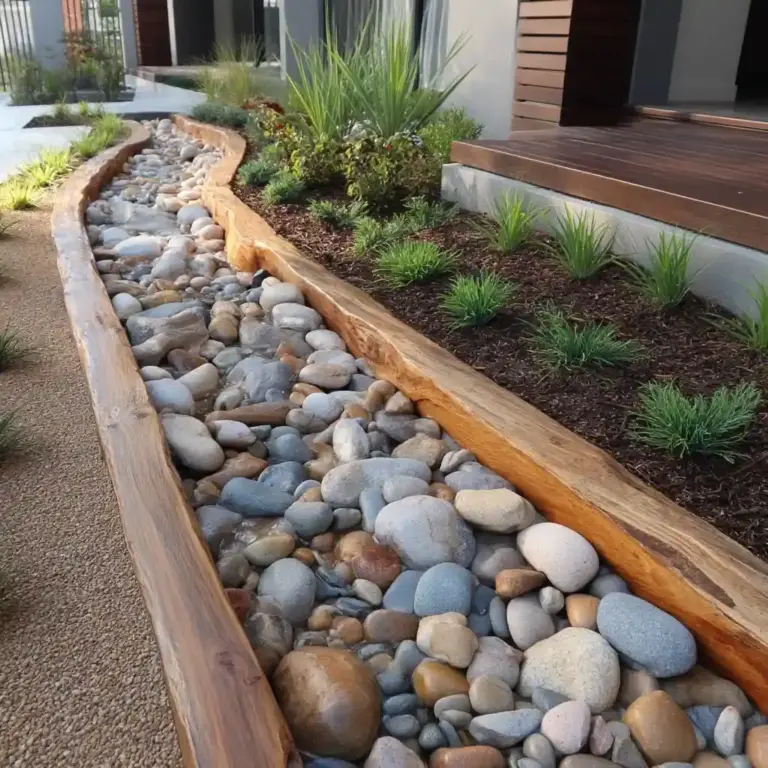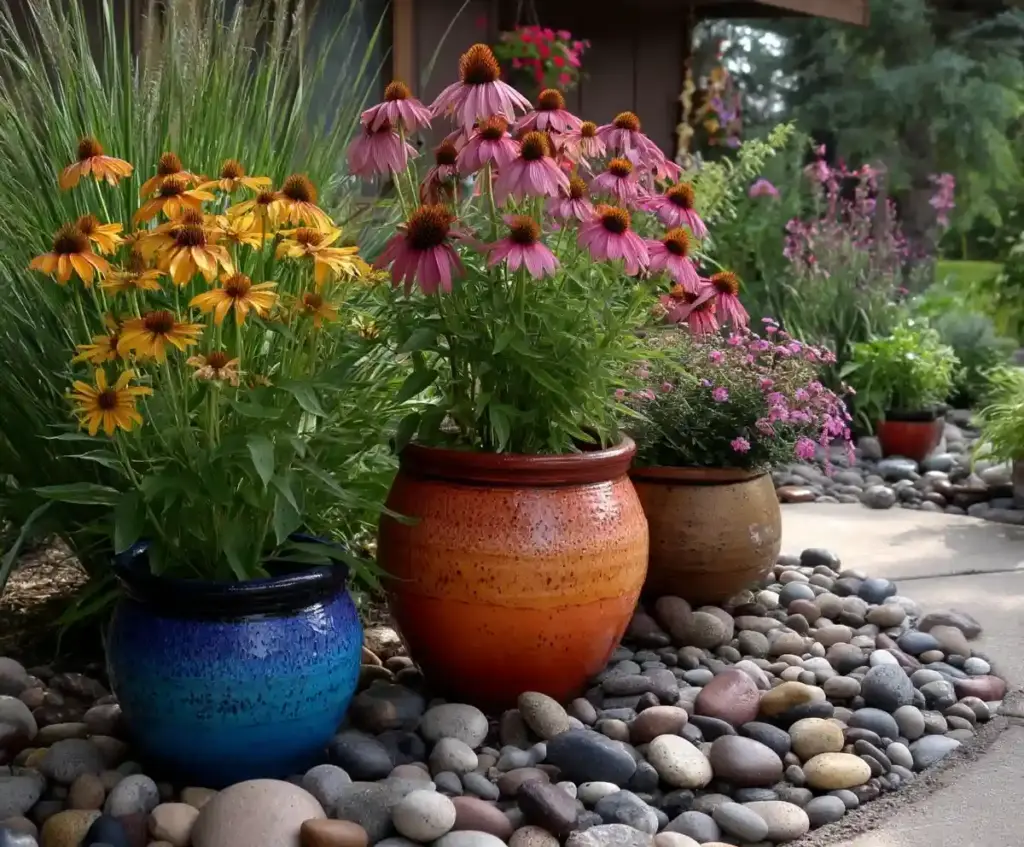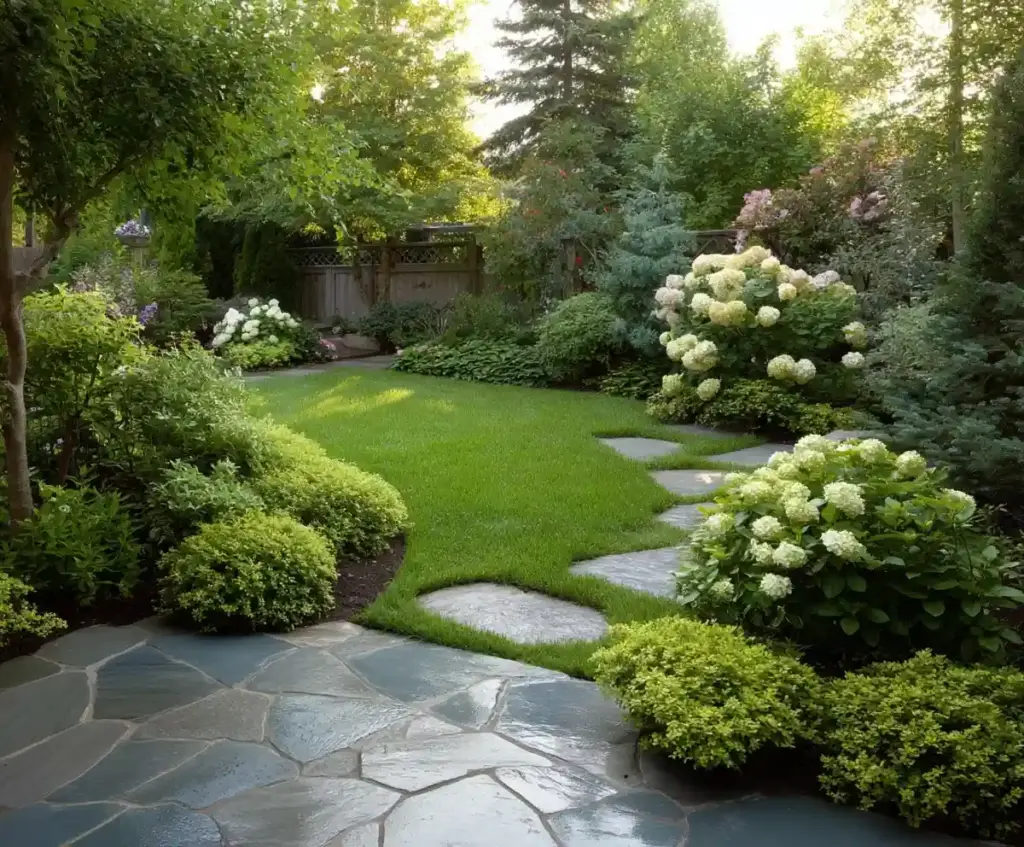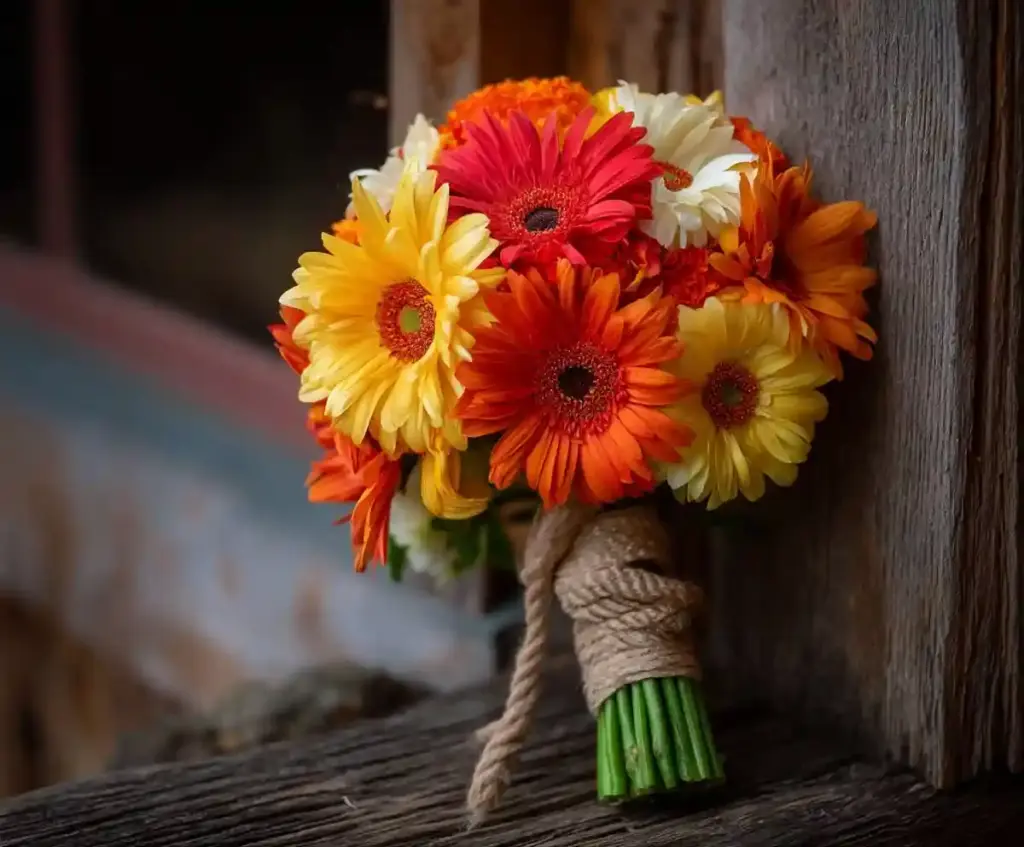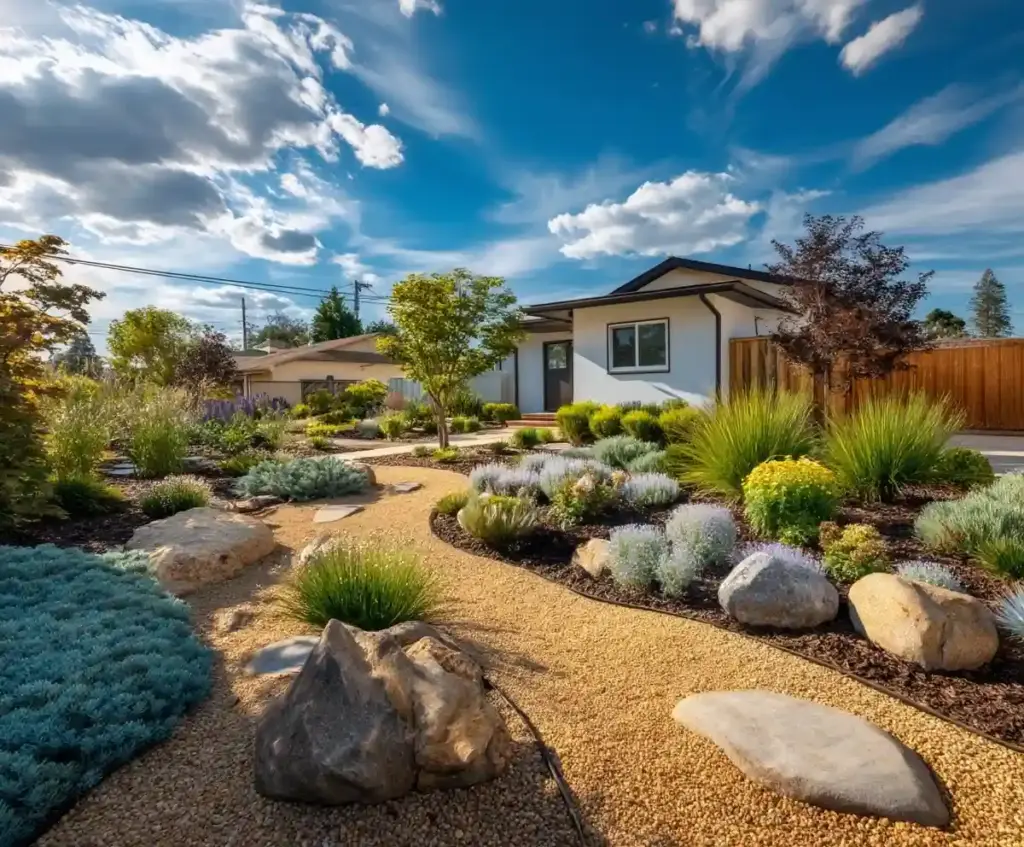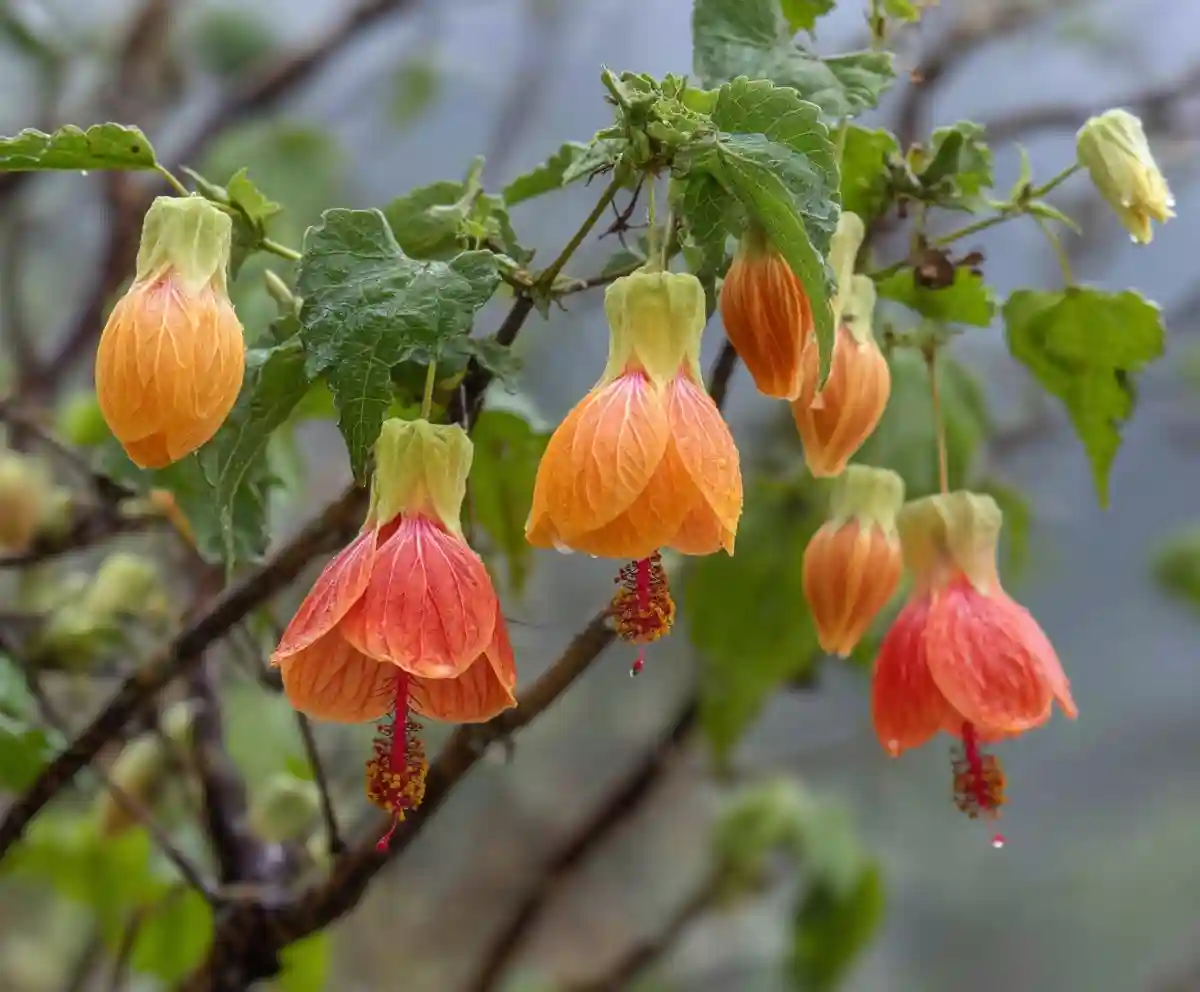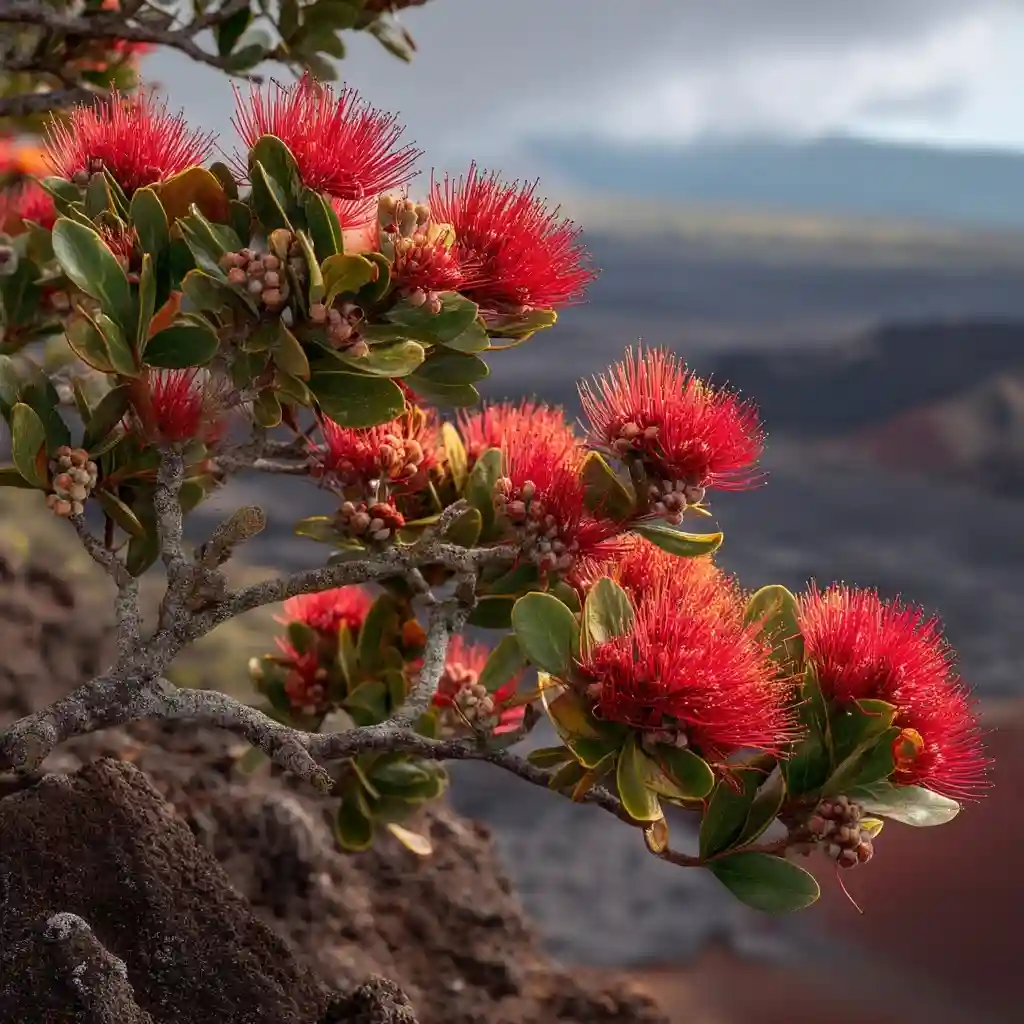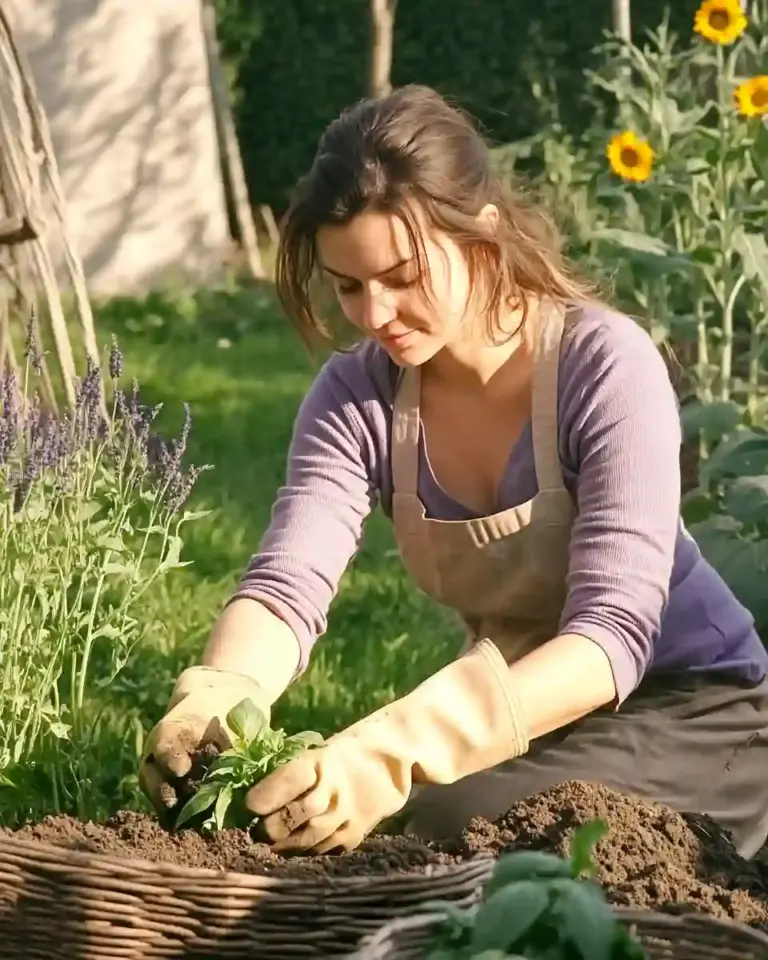Best Hawaiian Flowers are a vibrant symbol of the islands’ natural beauty, culture, and history. Hawaii is home to some of the world’s most unique plant species, with many found nowhere else on Earth. These flowers thrive in diverse habitats ranging from lush rainforests to volcanic slopes, and they carry deep cultural significance in Hawaiian traditions such as lei-making, hula, and ceremonial offerings.
In this guide, we’ll highlight 26 of the best Hawaiian flowers, showcasing their beauty, ecological importance, and the stories behind them. Whether you’re a garden enthusiast, a traveler, or someone captivated by tropical blooms, these flowers represent the heart of Hawaii’s botanical treasures.
Table of Contents
1. Metrosideros polymorpha (ʻŌhiʻa Lehua)
Metrosideros polymorpha, commonly known as ʻŌhiʻa Lehua, is one of the most iconic native Hawaiian flowers. This hardy tree is often the first to grow on new lava fields, symbolizing resilience and new beginnings. Its fiery red, brush-like blooms are not only visually stunning but also hold deep cultural significance, appearing frequently in Hawaiian legends and chants.
The ʻŌhiʻa Lehua plays a vital ecological role as well. Its nectar-rich flowers attract native honeycreepers, supporting the islands’ delicate bird populations. When growing in a garden, it prefers well-drained soil and full sun, mimicking its natural volcanic environment.
Tip for gardeners: If you live in a tropical or subtropical climate, planting ʻŌhiʻa Lehua can add a touch of authentic Hawaiian beauty to your landscape.
2. Sesbania tomentosa (Oahu River Hemp)
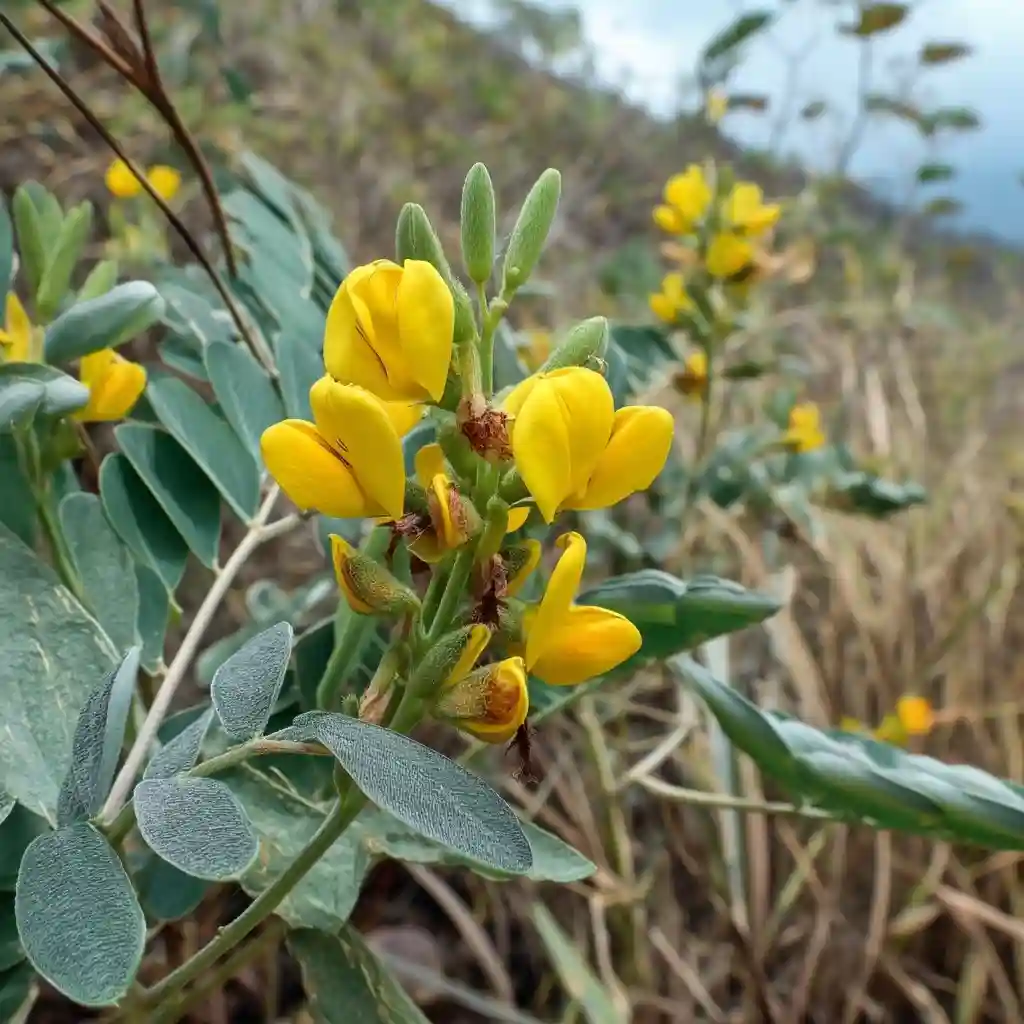
Sesbania tomentosa, also called Oahu River Hemp, is a rare flowering shrub native to Hawaii’s coastal dunes and dry lowlands. This endangered plant produces bright red, pea-shaped blossoms that add a burst of color to the landscape. Its silvery-green, velvety leaves give it a soft, attractive appearance even when not in bloom.
Traditionally, this plant held significance in Hawaiian culture, with its strong fibers once used for cordage and net-making. Ecologically, it helps stabilize sandy soils and supports native pollinators like bees and butterflies.
Gardening tip: Sesbania tomentosa thrives in sandy, well-drained soil with plenty of sunlight, making it ideal for xeriscaping or coastal gardens.
3. Argemone glauca (Pua Kala)
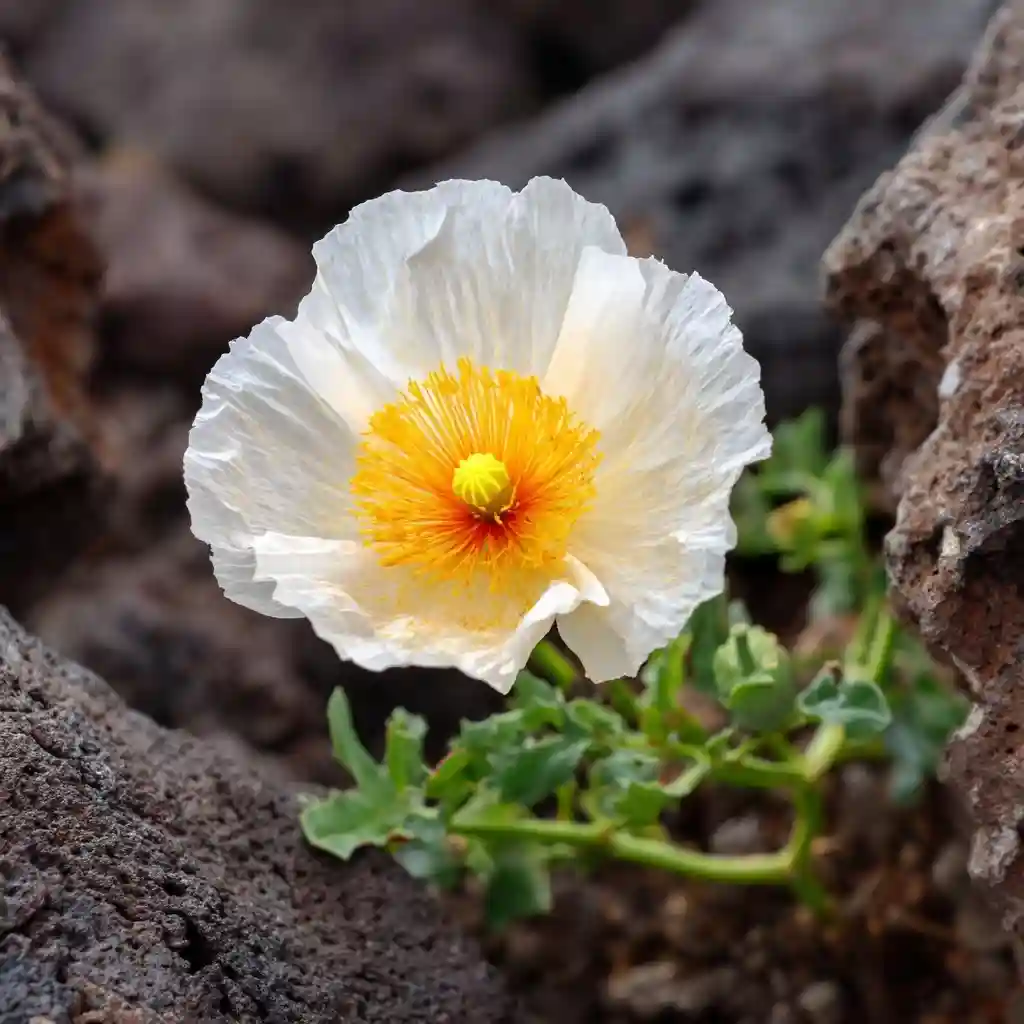
Argemone glauca, known locally as Pua Kala, is Hawaii’s native prickly poppy. This striking flower features delicate white petals with a bright yellow center, creating a stunning contrast against its spiny gray-green foliage. Despite its thorny appearance, Pua Kala symbolizes endurance, as it thrives in harsh volcanic soils and arid regions where few other plants can survive.
Historically, Native Hawaiians recognized the plant for its medicinal properties, although its milky sap can be toxic if not handled properly. Ecologically, Pua Kala supports native pollinators and contributes to the biodiversity of dry Hawaiian landscapes.
Gardening tip: Pua Kala can be grown in dry, rocky soils with full sun exposure. Be cautious when handling due to its spines.
4. Abutilon eremitopetalum
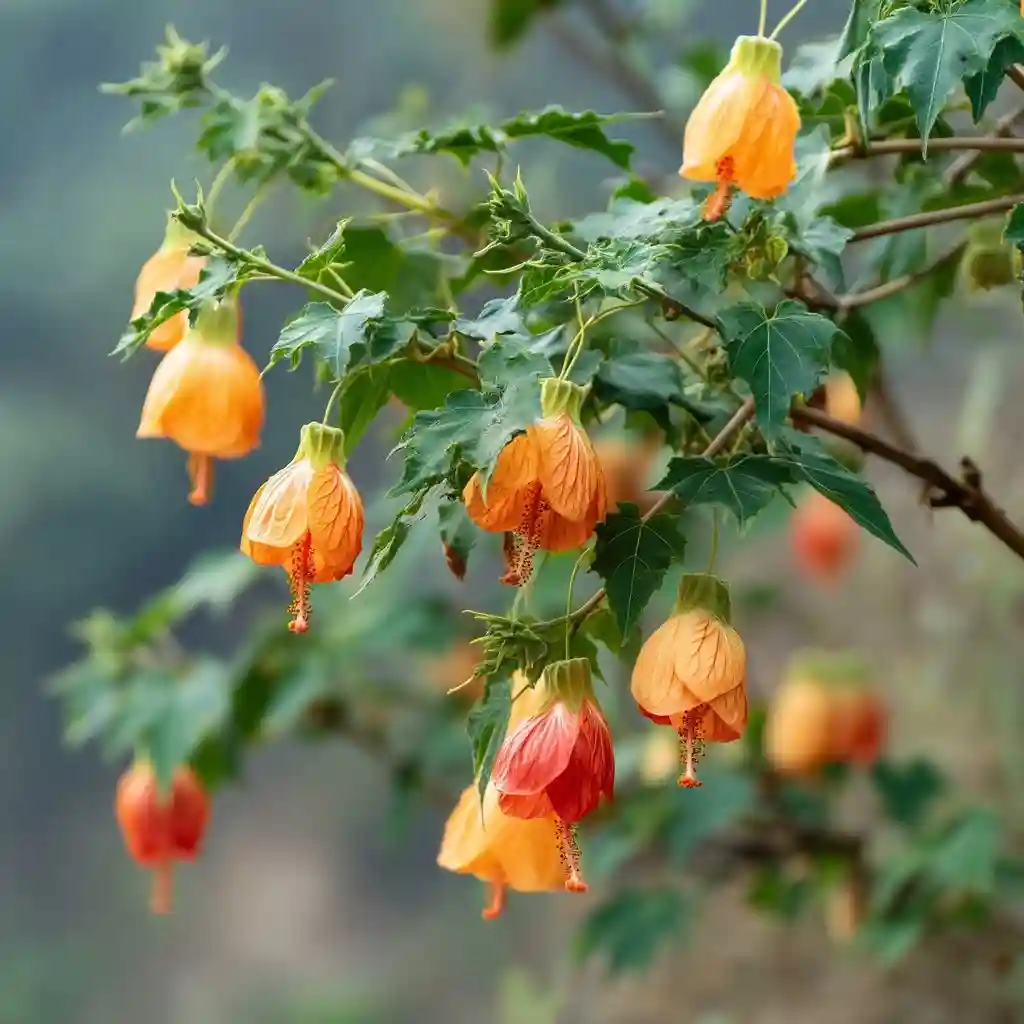
Abutilon eremitopetalum is an exceptionally rare flowering shrub found only in Hawaii, primarily on the island of Lānai. This native plant is recognized for its delicate, bell-shaped flowers, which typically appear in soft yellow or orange hues. Its foliage is velvety to the touch, adding an ornamental quality that appeals to gardeners and conservationists alike.
This species is currently endangered due to habitat loss and grazing animals, making its preservation crucial. Botanists actively propagate Abutilon eremitopetalum to protect it from extinction, and it is often found in specialized native plant gardens.
Gardening tip: If available from certified native plant nurseries, it should be grown in well-drained soil under partial sun to mimic its natural environment.
5. Geranium arboreum
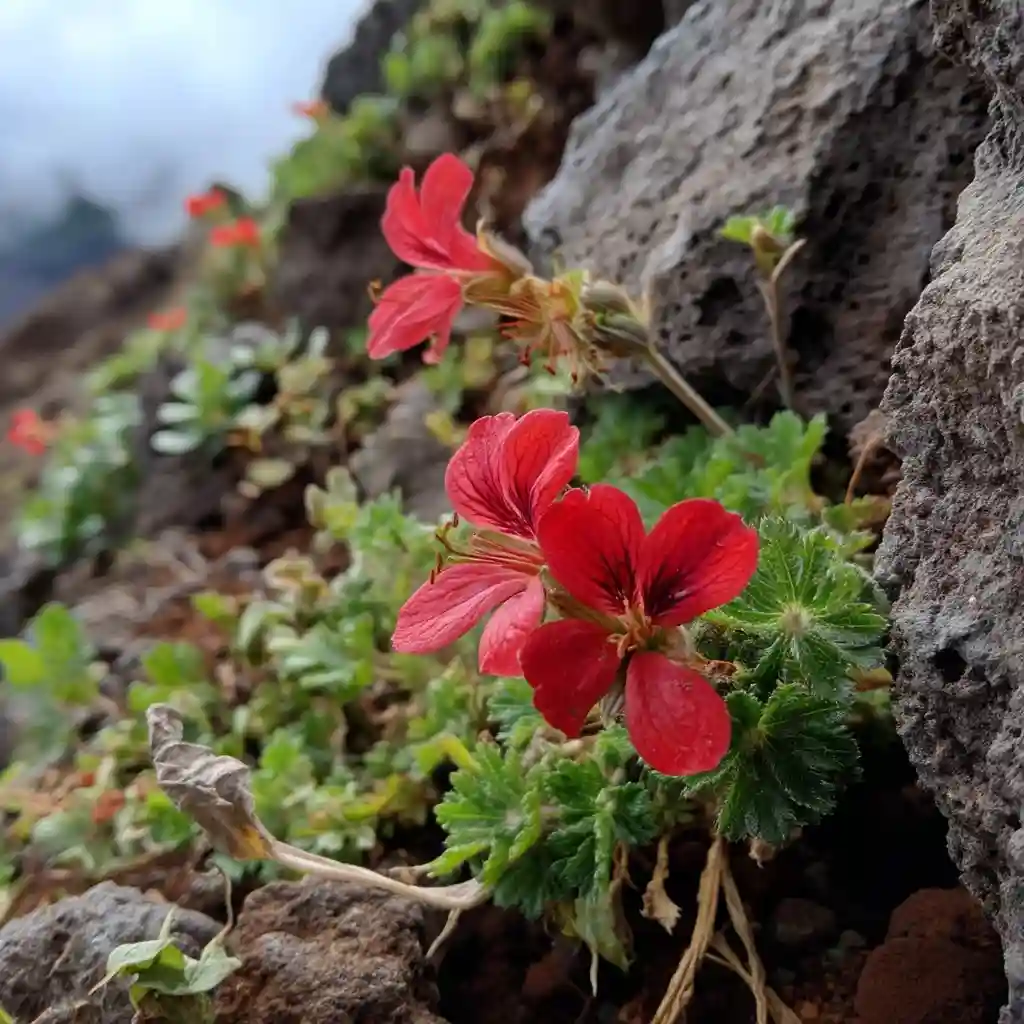
Geranium arboreum, sometimes called the Hawaiian red geranium, is one of the rarest geranium species in the world, existing only in the Hawaiian Islands. Unlike the common garden geraniums, this unique plant grows as a small shrub with clusters of vibrant red flowers that stand out against its green foliage.
Its natural habitat is typically dry to mesic forests, where it plays a role in supporting local insect life. Due to habitat destruction and the introduction of invasive species, Geranium arboreum is considered endangered, and conservation efforts are ongoing to protect its limited populations.
Gardening tip: This geranium is best suited for native plant gardens and should be planted in well-draining soil with exposure to partial sunlight.
6. Hibiscus brackenridgei
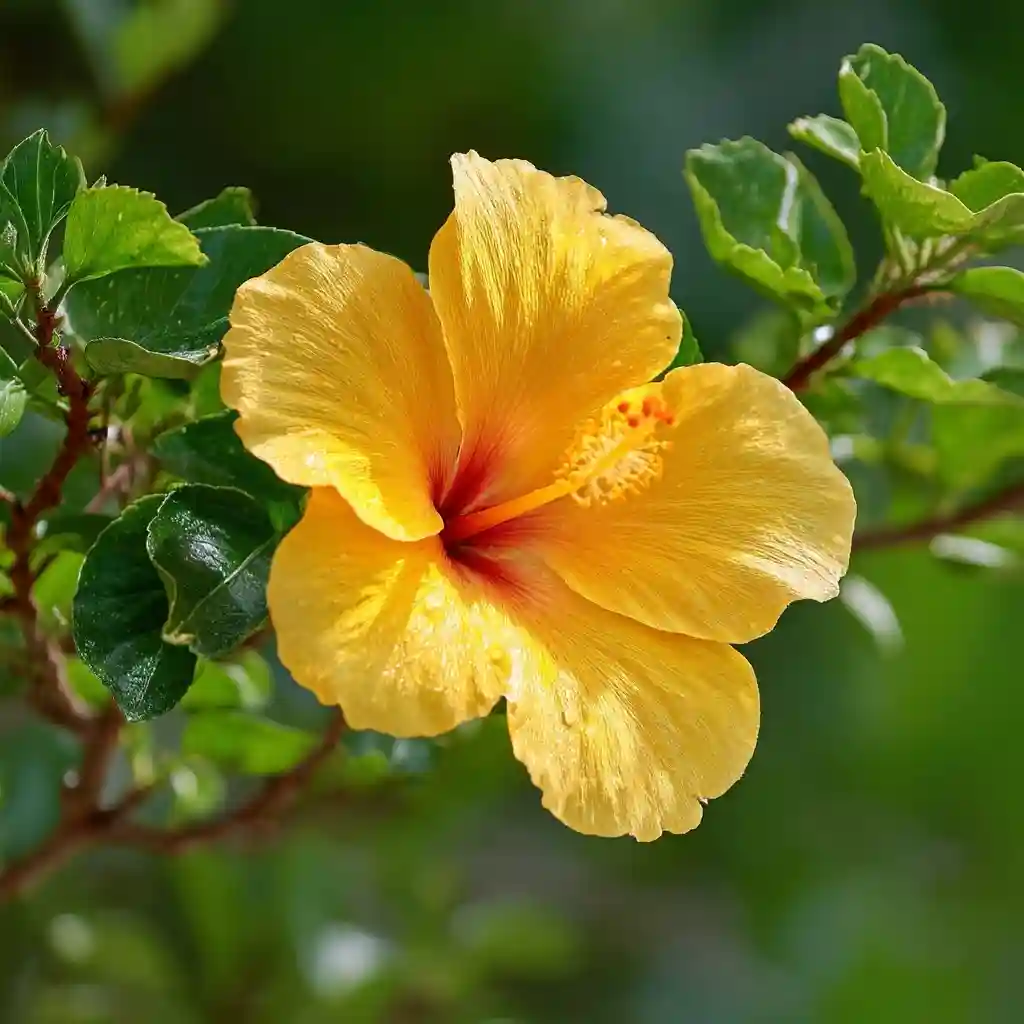
Hibiscus brackenridgei, also known as the Hawaiian yellow hibiscus, is the official state flower of Hawaii. Its bright golden-yellow petals and large, showy blooms make it one of the most best Hawaiian flowers to represent the islands’ tropical beauty. This hibiscus typically blooms in spring and summer, attracting butterflies and native pollinators.
Endemic to dry forests and shrublands on several Hawaiian islands, Hibiscus brackenridgei is considered endangered in the wild due to habitat loss and grazing by non-native animals. Gardeners often cultivate it to preserve the species and enjoy its striking display in home landscapes.
Gardening tip: Plant in sunny areas with well-drained soil. Regular pruning encourages more blooms and a fuller appearance.
7. Bidens cosmoides
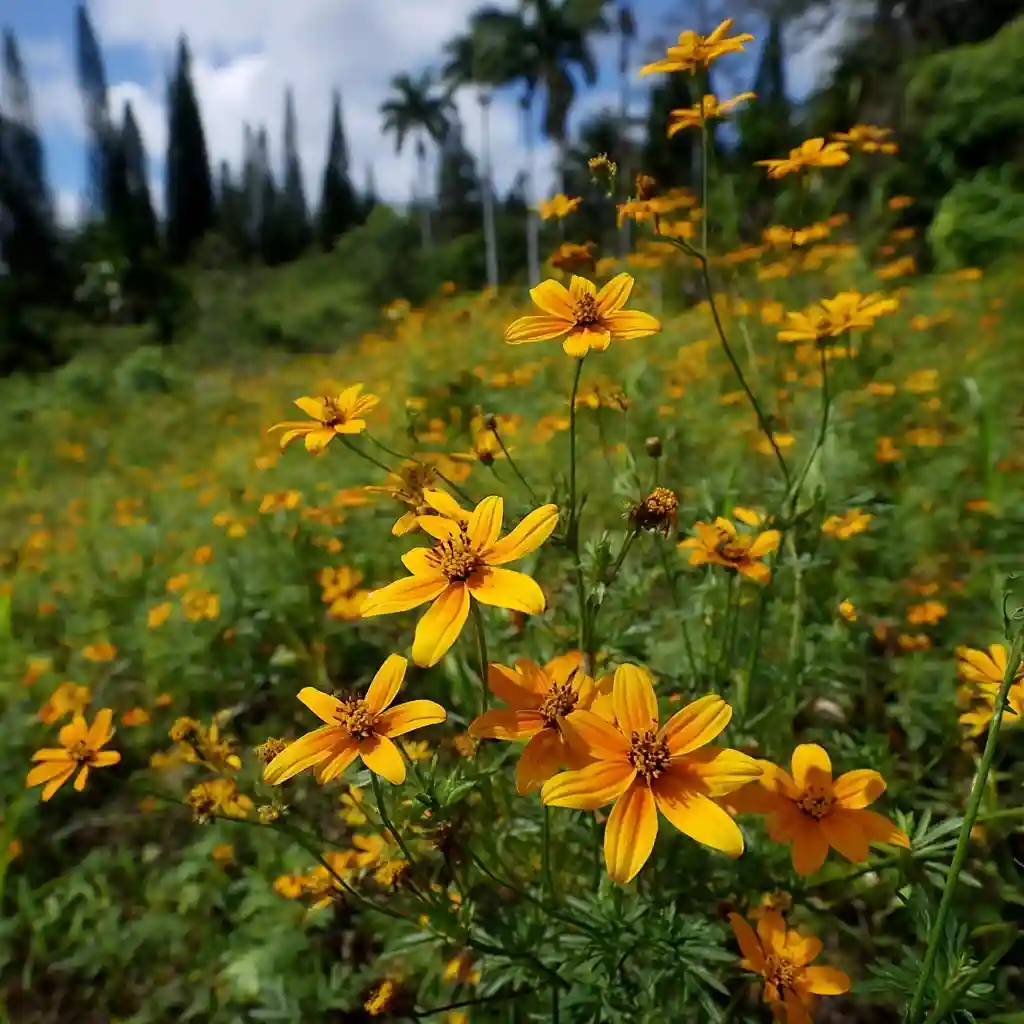
Bidens cosmoides, a member of the sunflower family, is one of the best Hawaiian flowers for adding height and vibrant color to gardens. This tall, shrubby plant can reach up to 10 feet, producing clusters of yellow to orange daisy-like flowers that attract native bees and butterflies. Its long blooming season and bright appearance make it a standout in any tropical or subtropical landscape.
In its natural Hawaiian habitat, Bidens cosmoides grows along forest edges and open areas, where it plays an essential role in supporting pollinators. Its resilience also makes it suitable for soil stabilization in certain landscapes.
Gardening tip: Grow in full sun to partial shade with moderately moist, well-draining soil. Deadheading spent blooms encourages continuous flowering.
8. Brighamia insignis (Cabbage on a Stick)
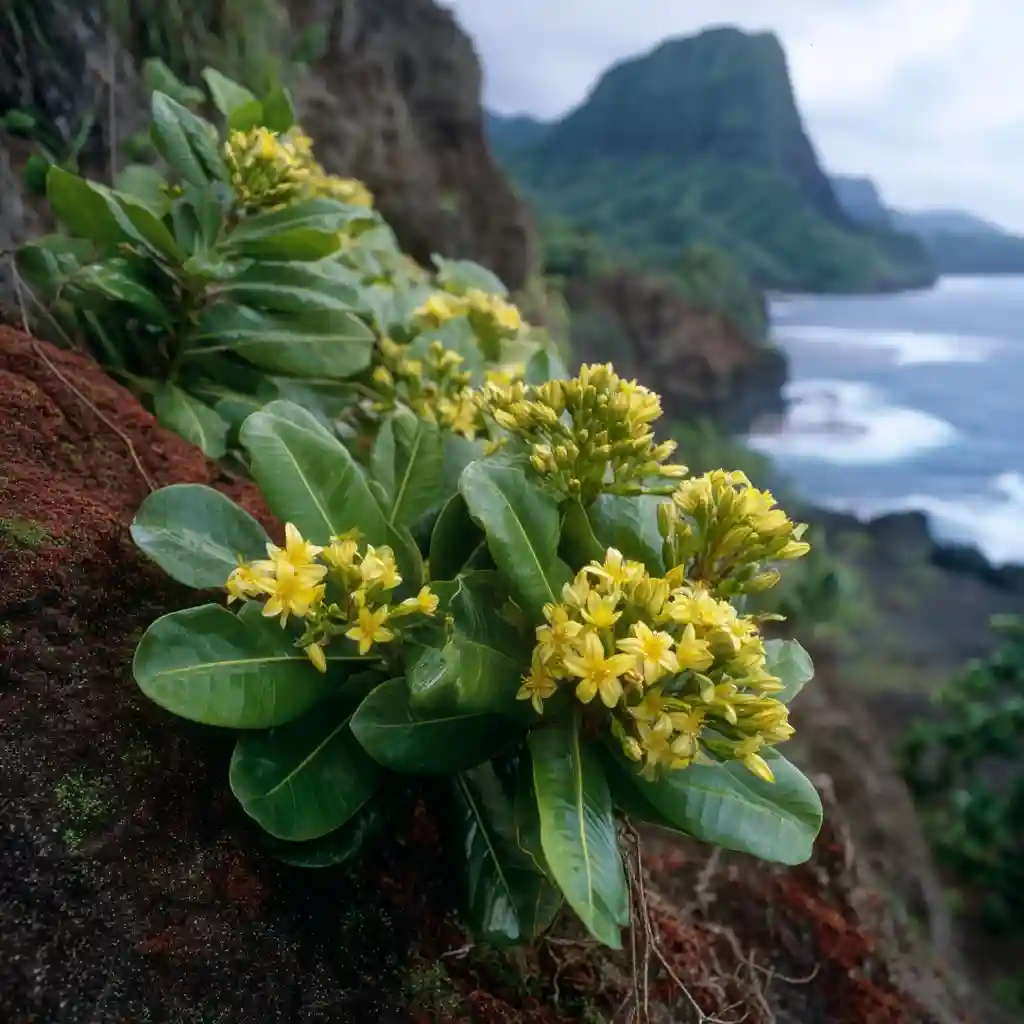
Brighamia insignis, famously nicknamed “cabbage on a stick” or Hawaiian palm, is one of the most unique and best Hawaiian flowers. This endangered plant features a thick, palm-like stem topped with a rosette of broad leaves and clusters of creamy yellow, trumpet-shaped flowers. Native to the steep sea cliffs of Kauaʻi and Niʻihau, it is a true botanical treasure of Hawaii.
Once pollinated by now-extinct native moths, Brighamia insignis relies almost entirely on human-assisted pollination to survive. Conservation efforts have made it a symbol of Hawaii’s fragile ecosystems and the importance of protecting native species.
Gardening tip: It thrives in well-draining, sandy soil and needs bright, indirect sunlight if grown in pots. Avoid overwatering to prevent root rot.
9. Sophora chrysophylla (Māmane)

Sophora chrysophylla, commonly known as Māmane, is a native Hawaiian tree that produces clusters of bright yellow flowers, making it one of the best Hawaiian flowers for supporting local wildlife. This hardy tree thrives in dry to subalpine forests, particularly on the islands of Hawaiʻi and Maui.
The Māmane tree is ecologically significant because its flowers and seeds provide essential food for native Hawaiian birds like the endangered palila. Its golden blossoms add a cheerful burst of color to high-elevation landscapes, standing out against the rugged terrain.
Gardening tip: Māmane prefers well-drained soil and full sun. It is an excellent choice for large gardens or conservation projects aiming to attract birds and support native ecosystems.
10. Broussaisia arguta (Kanawao)
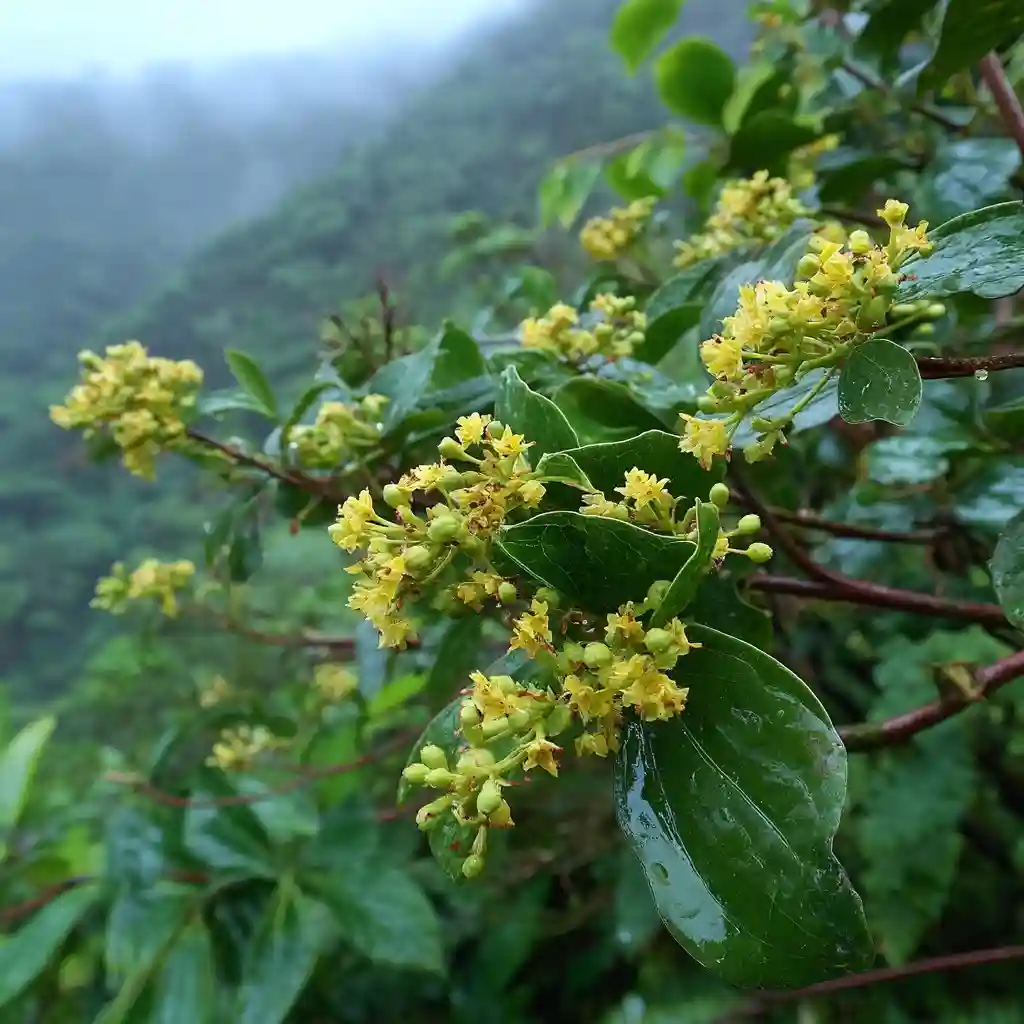
Broussaisia arguta, commonly known as Kanawao, is a native Hawaiian shrub found in moist forests across the islands. Its small, delicate flowers range from greenish-yellow to purple, giving it a subtle beauty that complements the lush understory of Hawaii’s rainforests. While not as flashy as hibiscus or orchids, Kanawao is one of the best Hawaiian flowers for supporting biodiversity.
This shrub is an important part of the native ecosystem, providing habitat and nectar for Hawaiian insects. Its leathery leaves and upright growth habit make it an excellent choice for native and restoration gardens, especially in shaded or semi-shaded areas.
Gardening tip: Kanawao thrives in consistently moist, well-draining soil with partial to full shade, making it perfect for tropical woodland gardens.
11. Argyroxiphium sandwicense subsp. (Hawaiian Silversword)
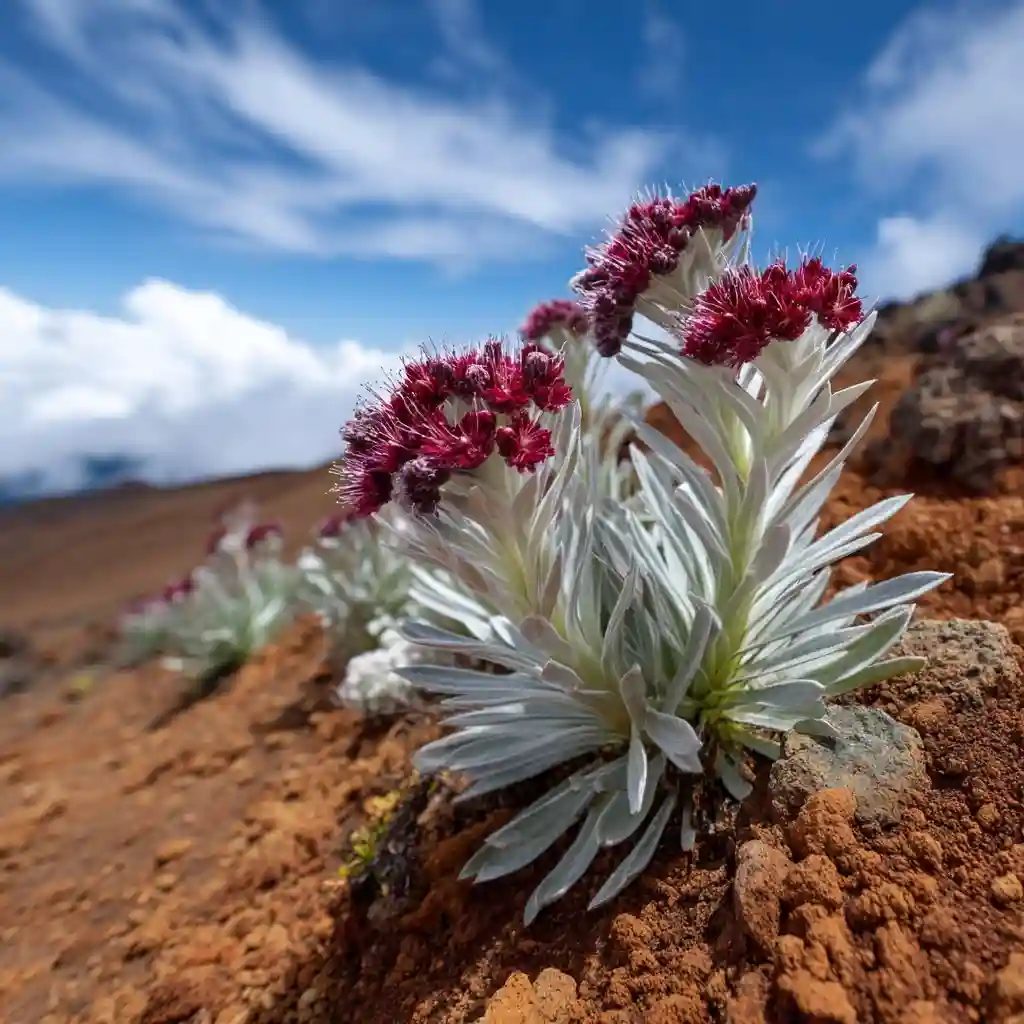
Argyroxiphium sandwicense, commonly known as the Hawaiian silversword, is one of the most iconic and best Hawaiian flowers found in the high volcanic regions of Maui and Hawaiʻi. Its shimmering, silver-gray leaves form a striking rosette that reflects sunlight, protecting the plant from harsh mountain conditions. When it blooms—an event that occurs only once in its lifetime—it produces a tall stalk covered with hundreds of purple to maroon flowers.
This rare plant is highly protected, as it grows only in specific alpine environments such as Haleakalā and Mauna Kea. Its unique life cycle and spectacular bloom make it a must-see for nature enthusiasts visiting Hawaii.
Gardening tip: Hawaiian silversword is not typically grown in home gardens due to its specialized habitat needs, but it can be admired in protected national parks where it thrives naturally.
12. Lobelia gaudichaudii
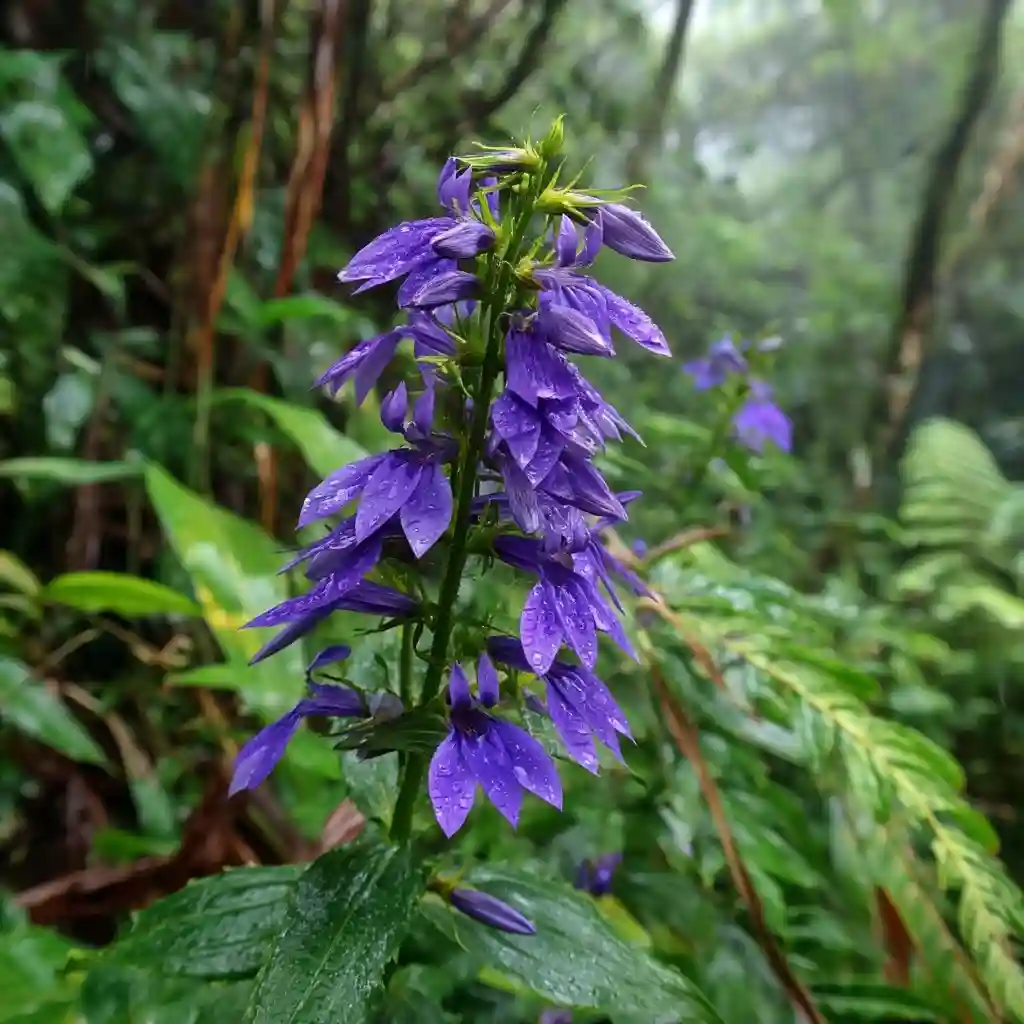
Lobelia gaudichaudii is a striking native plant and easily one of the best Hawaiian flowers for its dramatic appearance. This species produces long, tubular flowers in shades of purple to blue, perfectly adapted for pollination by native Hawaiian honeycreepers. Its blooms cascade from tall, upright stems, adding a vertical accent to its natural habitat in wet to mesic forests.
This rare lobelia is endangered due to habitat loss and the decline of its native pollinators. It thrives in high-elevation rainforests, where its presence supports fragile ecosystems. Seeing it in bloom in the wild is a true Hawaiian treasure.
Gardening tip: Because of its very specific environmental needs, this plant is best left to conservation programs. For similar visual appeal in home gardens, tropical lobelias are a good alternative.
13. Leptecophylla tameiameiae (Pukiawe)
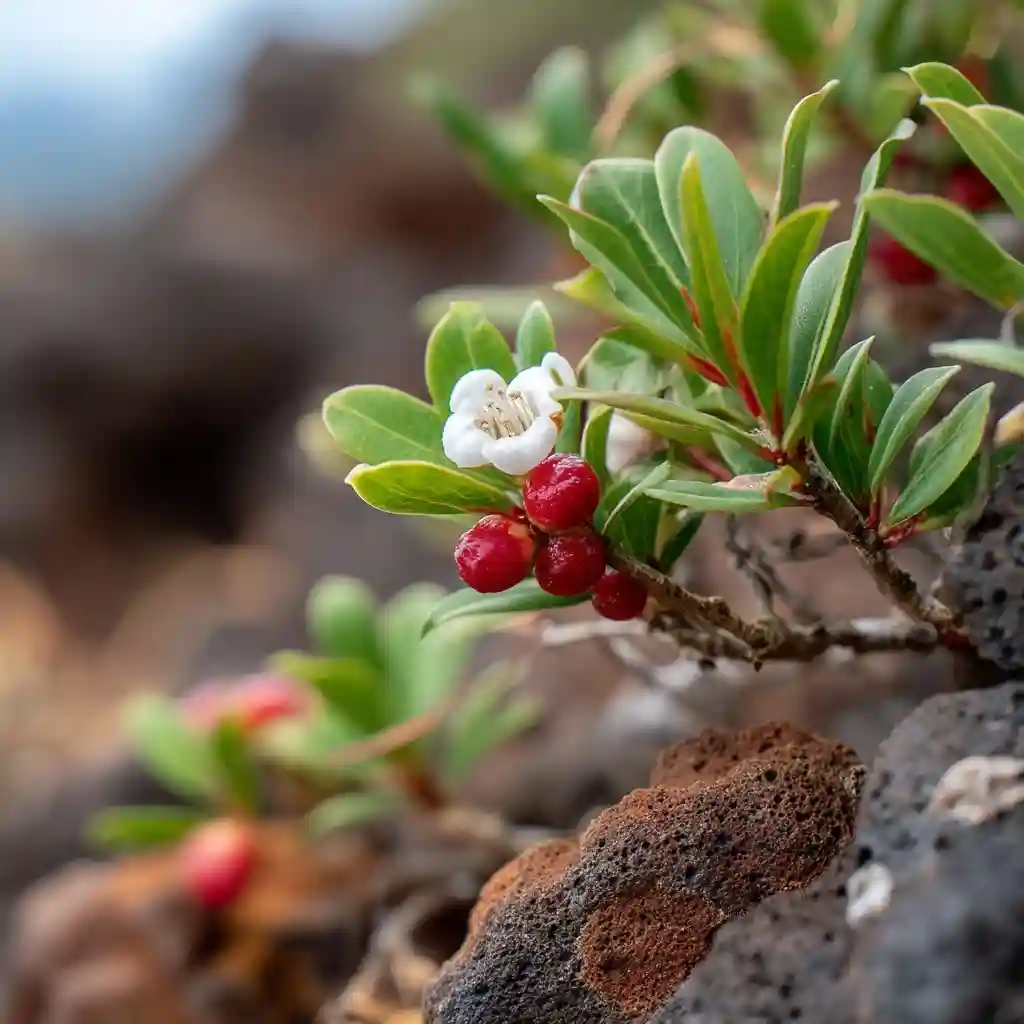
Leptecophylla tameiameiae, commonly known as Pukiawe, is a hardy native shrub and one of the best Hawaiian flowers for natural landscapes and wildlife support. It produces tiny, bell-shaped white or pink flowers followed by small red, pink, or white berries. These berries are an important food source for native Hawaiian birds, especially in dry and high-elevation shrublands.
Pukiawe is often found on lava flows, ridges, and open forests, showcasing its remarkable adaptability to harsh conditions. In Hawaiian culture, its branches and berries were sometimes used in traditional practices and ceremonies.
Gardening tip: Pukiawe thrives in well-drained, rocky soil and full sun. Its drought tolerance makes it an excellent choice for xeriscaping or low-maintenance native gardens.
14. Anoectochilus sandvicensis (Hawaiian Jewel Orchid)
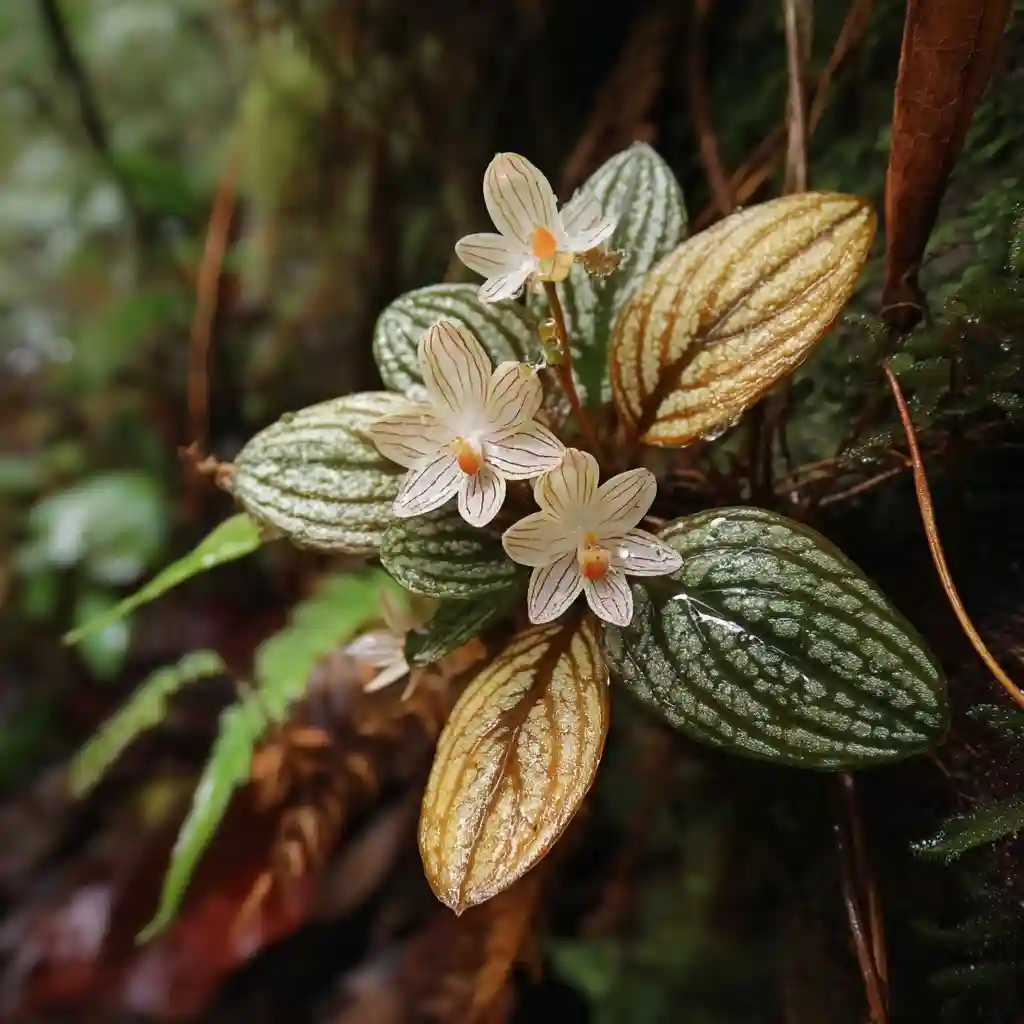
Anoectochilus sandvicensis, known as the Hawaiian jewel orchid, is a delicate and rare native orchid that rightfully earns its place among the best Hawaiian flowers. Unlike showy tropical orchids, this species is prized for its intricate, dark green leaves with golden veining and its small, pale blossoms that appear in clusters along a slender stalk.
It thrives in the shaded, moist understories of Hawaiian rainforests, often growing among mossy rocks and leaf litter. Its rarity and fragile beauty make it a protected species, highly valued by conservationists and admired by orchid enthusiasts.
Gardening tip: This orchid is extremely sensitive to environmental changes and is best appreciated in its natural habitat or through conservation displays rather than home cultivation.
15. Vaccinium reticulatum (‘Ōhelo)
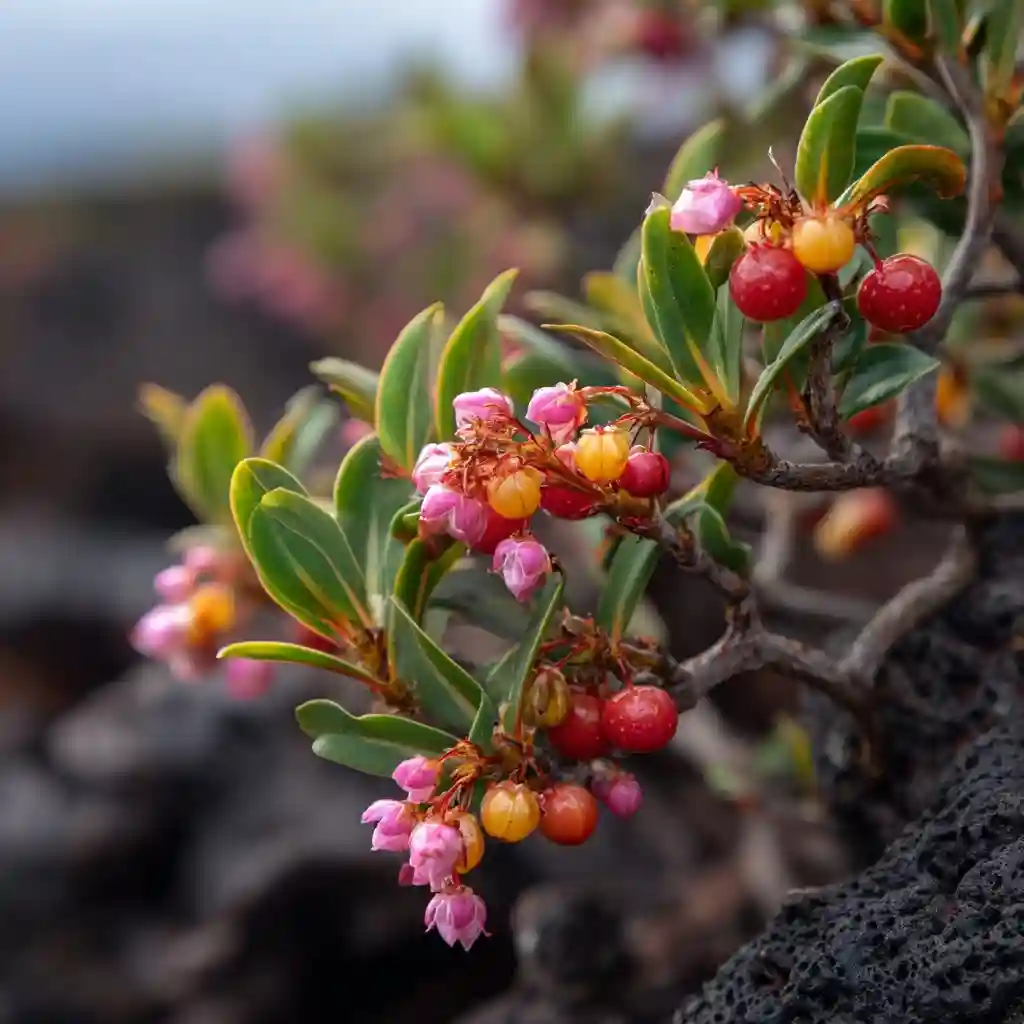
Vaccinium reticulatum, locally known as ‘Ōhelo, is a native Hawaiian shrub in the blueberry family and a favorite among the best Hawaiian flowers for both its beauty and cultural significance. This hardy plant produces small, bell-shaped pink to red flowers, followed by bright red or yellow berries that are edible and historically offered to the Hawaiian volcano goddess, Pele.
Thriving in volcanic landscapes and high-elevation forests, ‘Ōhelo is well-adapted to harsh conditions, often growing along lava fields where few other plants survive. Its berries are enjoyed by native birds and occasionally by humans, though picking in protected areas is strictly regulated.
Gardening tip: ‘Ōhelo can be grown in acidic, well-draining soil in cool climates. It is perfect for native gardens or as a unique ornamental shrub in volcanic or rocky landscapes.
16. Dwarf Naupaka
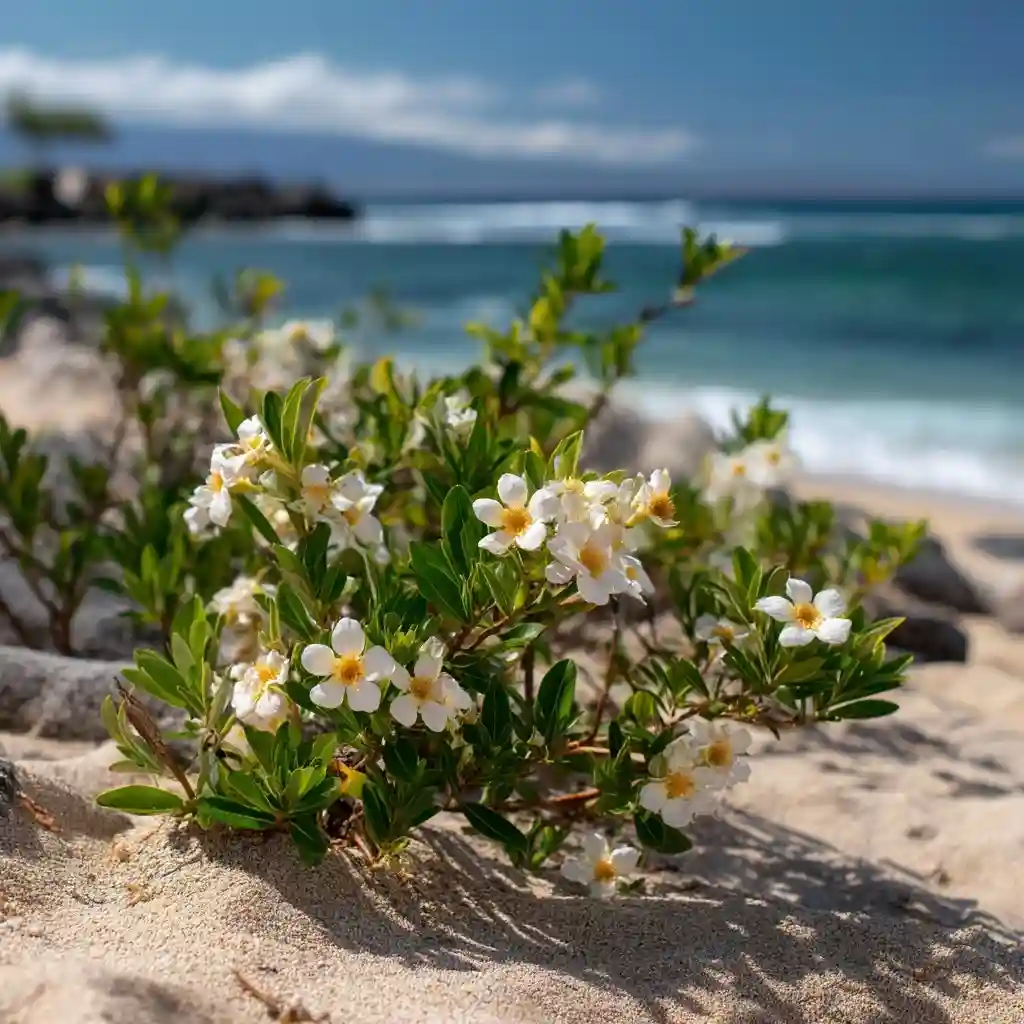
Dwarf Naupaka, a compact variety of the native Naupaka shrub, is a coastal plant well-known among the best Hawaiian flowers for its unique half-shaped blooms. Each flower appears as if split in two, giving rise to the Hawaiian legend of star-crossed lovers separated between the mountains and the sea.
This hardy shrub thrives in sandy and salty environments, making it a natural choice for stabilizing dunes and protecting coastal landscapes. Its small white to pale lavender flowers attract pollinators, and its dense foliage provides shelter for native wildlife.
Gardening tip: Dwarf Naupaka is ideal for coastal gardens or erosion control. Plant it in sandy, well-drained soil with full sun for best growth and natural salt tolerance.
17. Nanu or Na‘u Gardenia
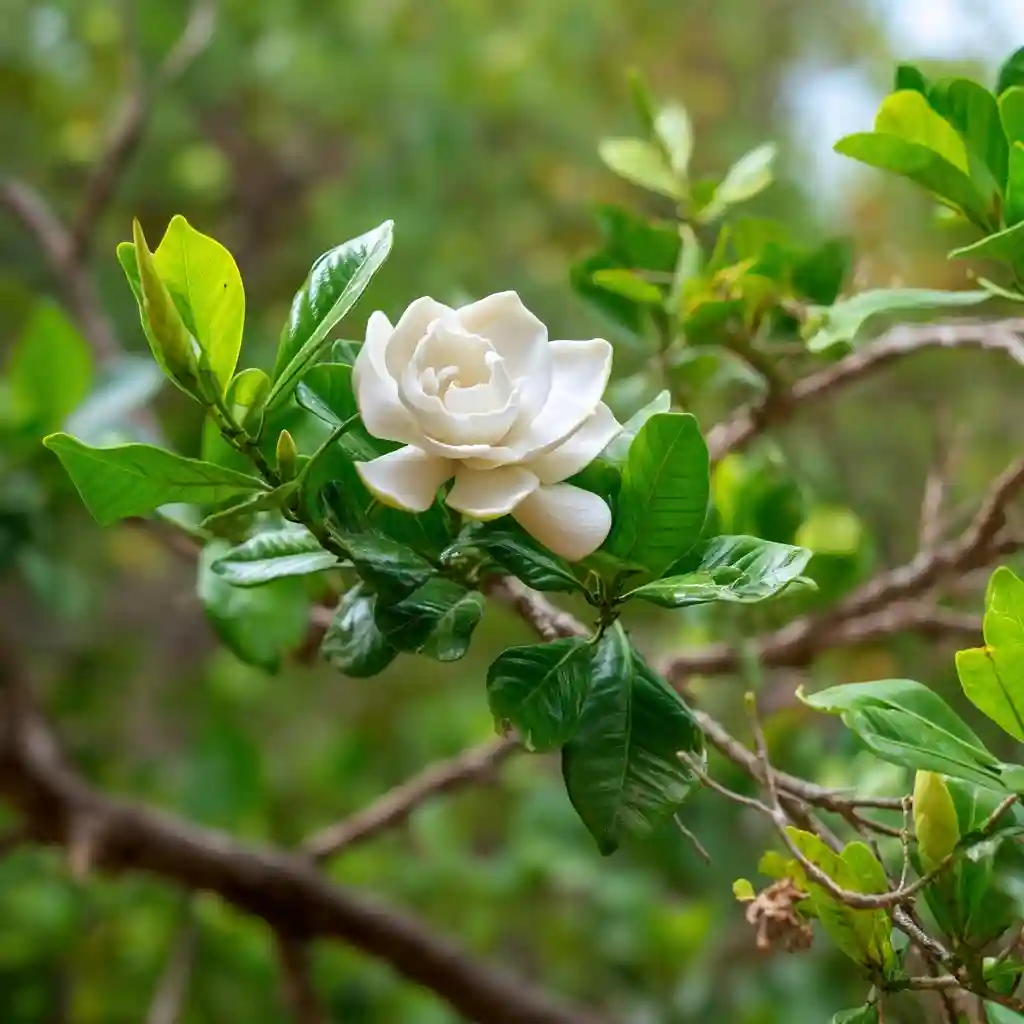
Nanu, also known as Na‘u Gardenia (Gardenia brighamii), is a fragrant native Hawaiian shrub that easily ranks among the best Hawaiian flowers for its beauty and cultural significance. Its creamy white, star-shaped blooms release a sweet, captivating fragrance, often used in lei-making and traditional ceremonies.
This rare gardenia prefers dry to mesic forests and is now considered endangered due to habitat loss and grazing animals. Its glossy green leaves and showy, aromatic flowers make it a prized choice for native Hawaiian gardens and conservation landscapes.
Gardening tip: Plant Nanu in well-drained soil with full sun to partial shade. Water moderately, and protect young plants from strong winds for optimal growth.
18. Moloka‘i White Hibiscus
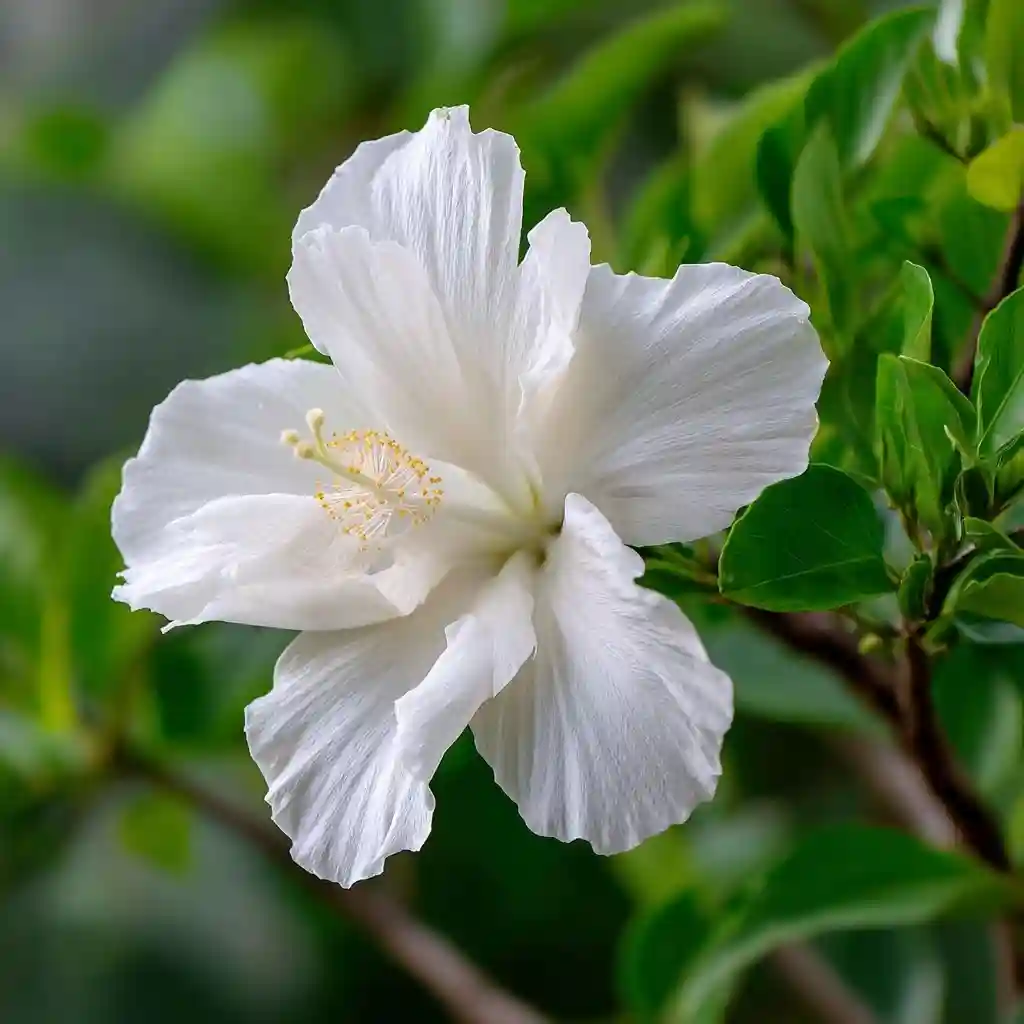
The Moloka‘i White Hibiscus (Hibiscus arnottianus subsp. immaculatus) is one of the rarest native hibiscus species and proudly belongs among the best Hawaiian flowers. Found only on the island of Moloka‘i, this stunning hibiscus produces pure white, slightly fragrant blooms that contrast beautifully with its lush green foliage.
This species is highly valued for conservation because of its extreme rarity and vulnerability to habitat loss and invasive species. Its elegant white flowers also attract pollinators, making it a vital component of native ecosystems.
Gardening tip: Grow this hibiscus in full sun with well-draining soil. Regular pruning encourages healthy growth, and occasional fertilization promotes abundant blooms.
19. Dwarf White Hibiscus
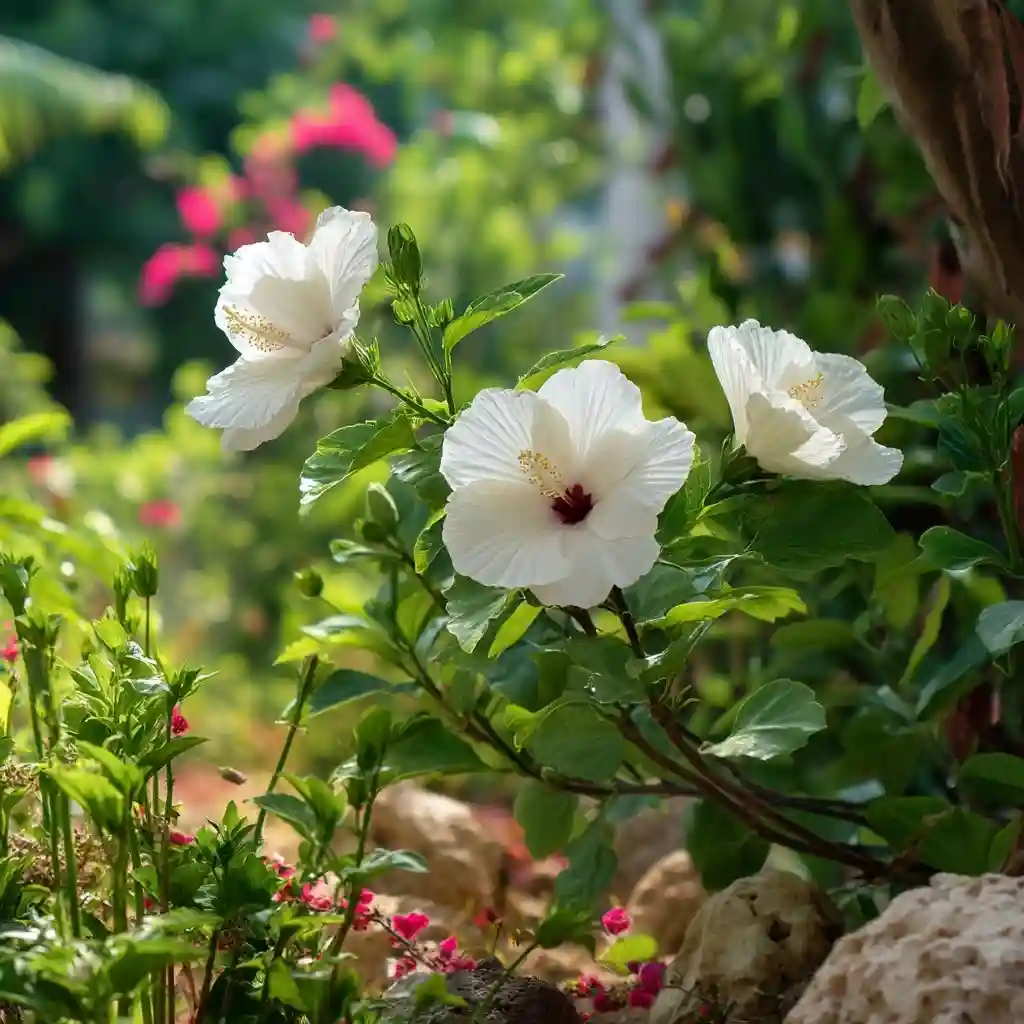
The Dwarf White Hibiscus is a compact variety of hibiscus celebrated as one of the best Hawaiian flowers for small gardens and ornamental landscapes. Its crisp white blooms stand out against deep green leaves, offering a tropical elegance without requiring as much space as larger hibiscus varieties.
This hibiscus variety is ideal for hedges, borders, or container planting. While it doesn’t have the same cultural significance as the Hawaiian yellow hibiscus, it contributes beauty and pollinator support to local gardens.
Gardening tip: Plant in full sun with well-drained soil. Regular pruning helps maintain its compact shape and encourages more frequent blooming.
20. Koki‘o ‘Ula
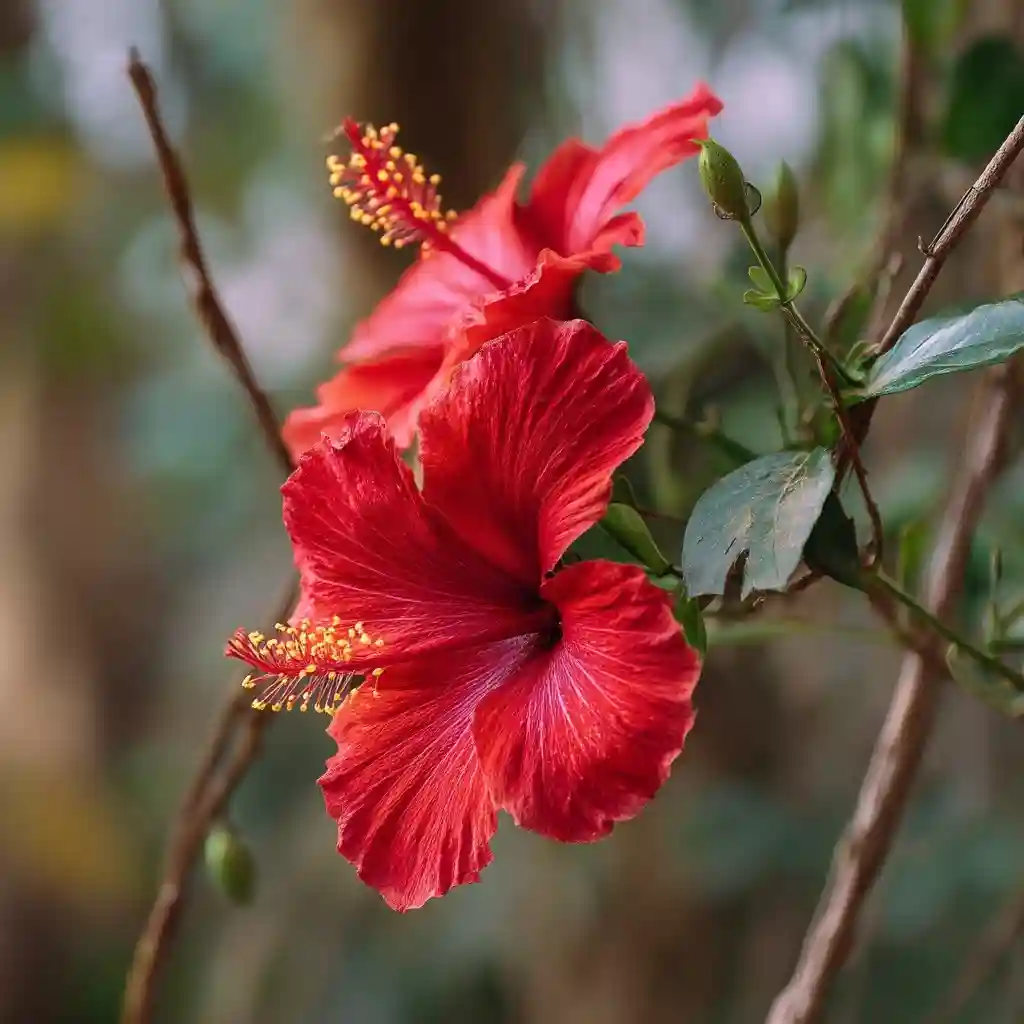
Koki‘o ‘Ula (Hibiscus kokio) is a vibrant native hibiscus and one of the best Hawaiian flowers for its brilliant red to orange blossoms. This shrub or small tree is a favorite among gardeners and conservationists because of its striking color and ability to attract pollinators such as butterflies and native honeycreepers.
Found naturally in dry to mesic forests, Koki‘o ‘Ula has several varieties across the islands, each adapted to its local environment. Its bold blooms have long been admired in Hawaiian landscapes and occasionally used in lei-making traditions.
Gardening tip: Plant Koki‘o ‘Ula in full sun with well-draining soil. Occasional pruning promotes bushier growth and encourages continuous flowering.
21. Red ‘Ilima
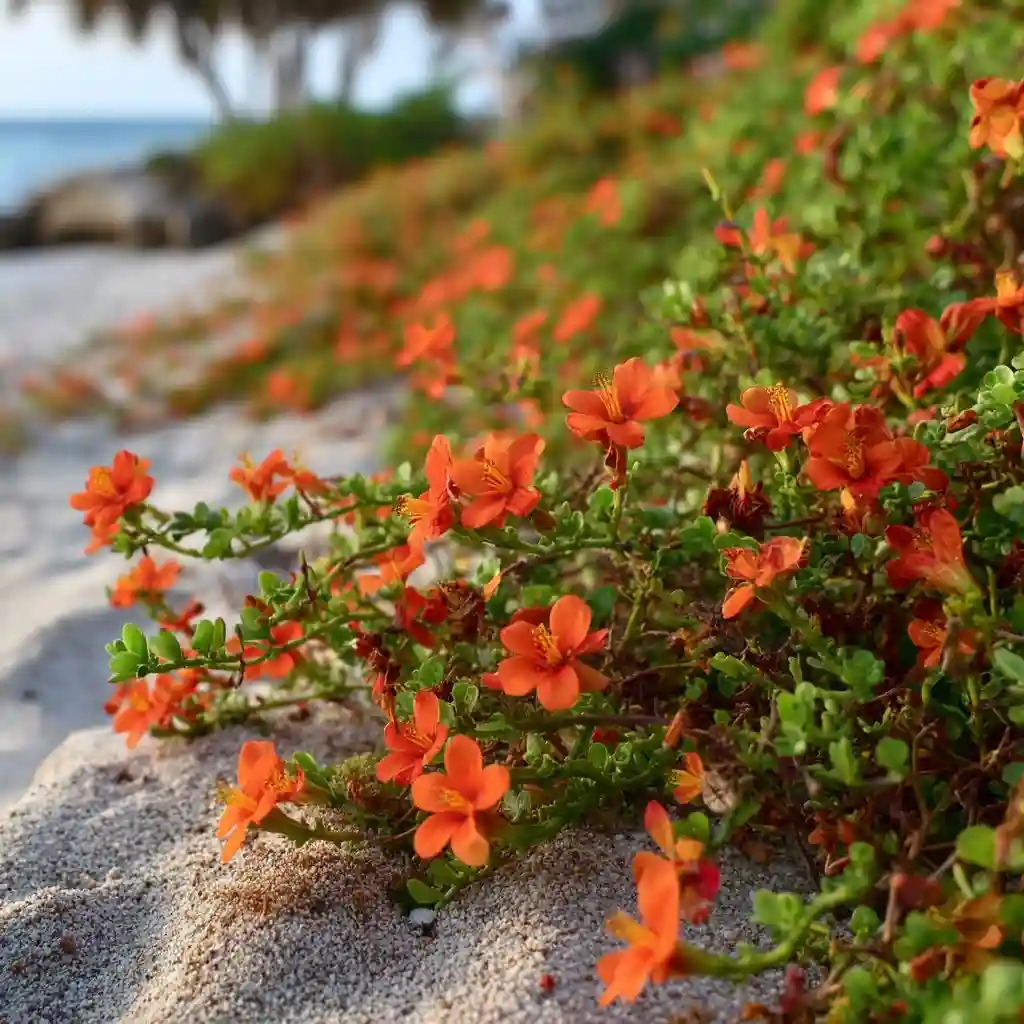
Red ‘Ilima (Sida fallax) is a beloved native Hawaiian flower and an essential part of the islands’ cultural heritage. Known for its small, brilliant orange-red blooms, it is often included among the best Hawaiian flowers because of its importance in lei-making. The delicate blossoms are traditionally strung into leis that symbolize love, honor, and connection to the land.
This hardy groundcover thrives in coastal and dry regions, with its deep roots helping to stabilize sandy soils. Its resilience and cultural significance make it a favorite for both native landscaping and traditional practices.
Gardening tip: Red ‘Ilima prefers full sun and sandy, well-draining soil. Minimal watering is needed once established, making it a low-maintenance option for dry or coastal gardens.
22. Hawaii Tree Cotton
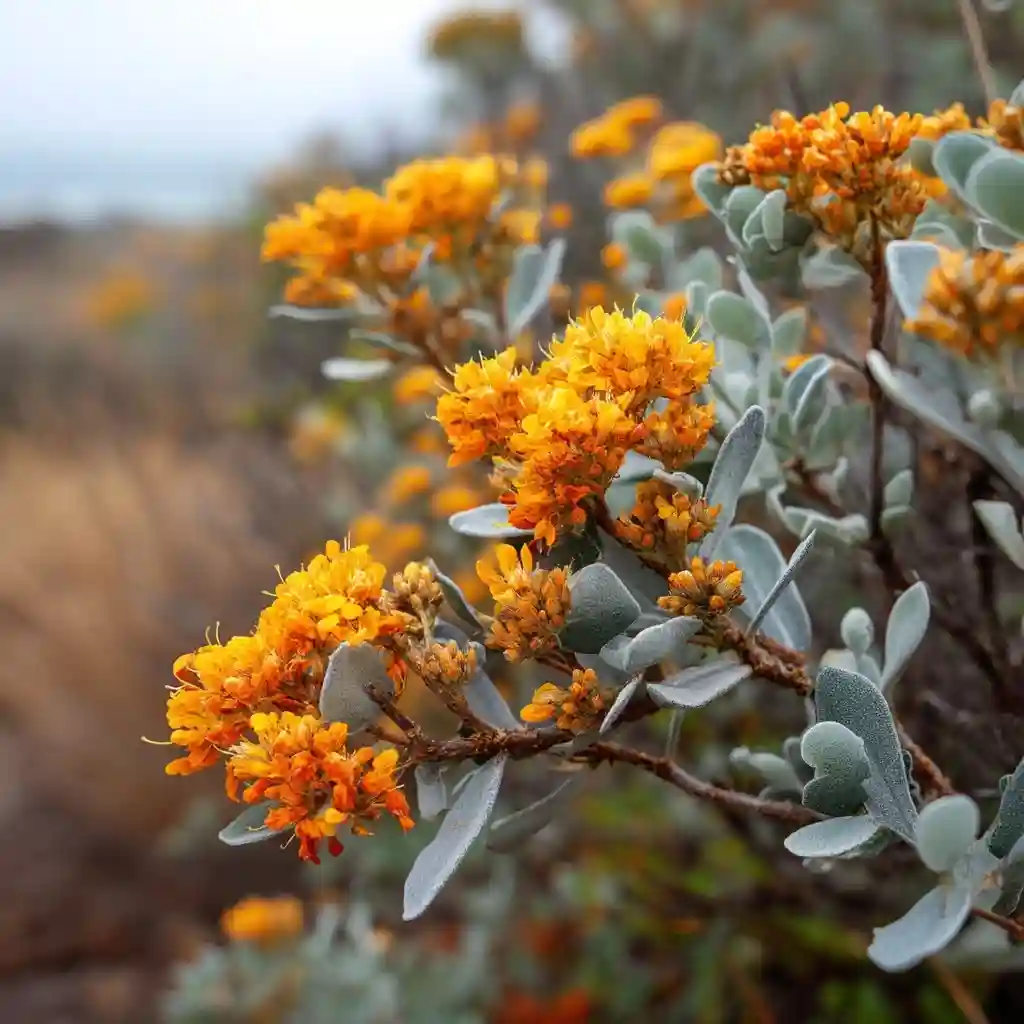
Hawaii Tree Cotton (Gossypium tomentosum), known locally as Mao, is a native plant that produces soft yellow blossoms, placing it among the best Hawaiian flowers for its unique beauty and ecological value. Over time, the yellow petals deepen into a warm orange before fading, adding seasonal interest to its natural landscape.
This shrub thrives in dry, coastal, and lowland areas, where its gray-green, fuzzy leaves help it retain moisture under harsh sunlight. In ancient Hawaii, its fibers were used for cordage and traditional crafts, highlighting its cultural significance.
Gardening tip: Plant in sandy or rocky, well-drained soil with full sun. It requires very little water once established and is excellent for xeriscaping or dryland gardens.
23. Pua ‘Ala
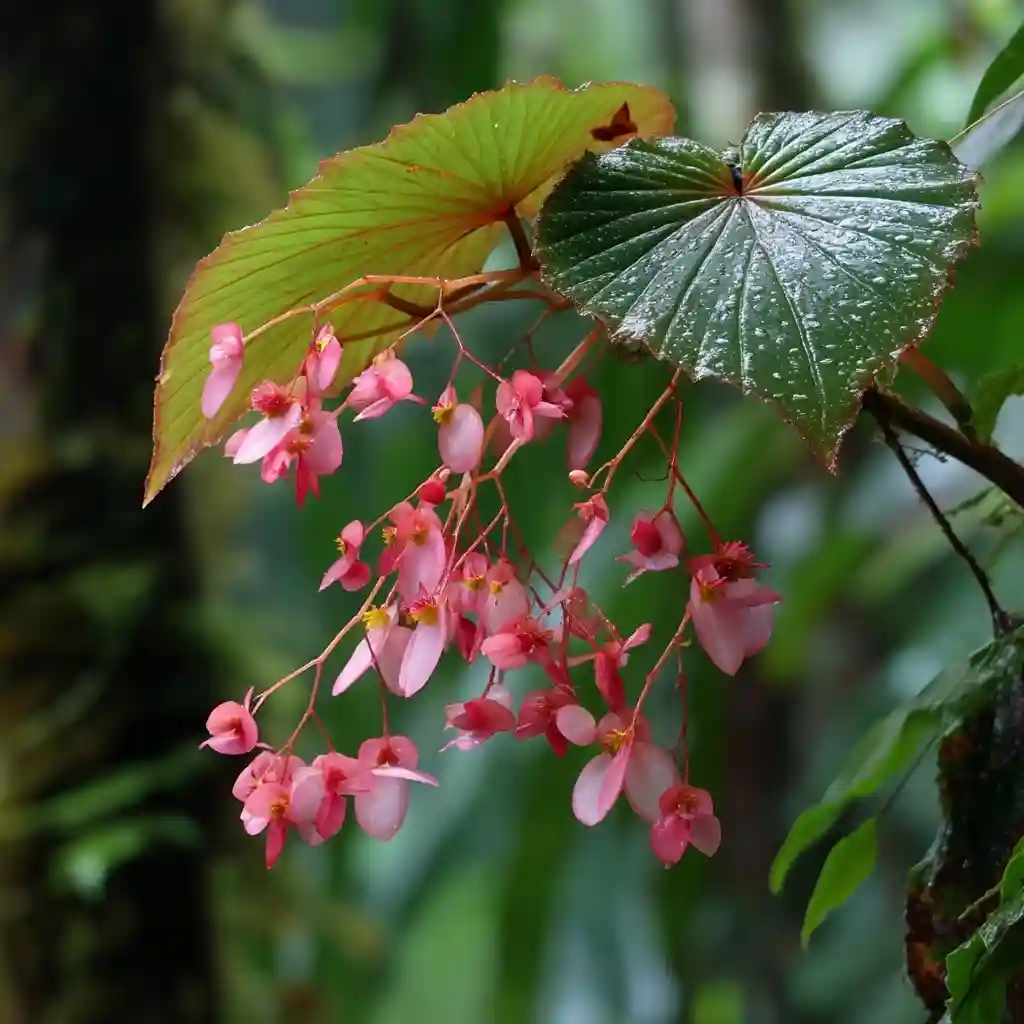
Pua ‘Ala (Hillebrandia sandwicensis) is a rare and delicate native begonia, recognized as one of the best Hawaiian flowers for its graceful, pendulous blooms. Its soft pink flowers dangle elegantly beneath large, heart-shaped leaves, creating a striking contrast in the lush understories of Hawaiian rainforests.
What makes Pua ‘Ala especially unique is that it is the only begonia species endemic to Hawaii, thriving in cool, moist, and shaded environments along streams and forested slopes. Its rarity and beauty make it a true hidden gem in native Hawaiian flora.
Gardening tip: Pua ‘Ala is extremely sensitive to environmental changes and is best preserved in its natural habitat or through conservation efforts rather than home gardens.
Conclusion
The best Hawaiian flowers showcase the islands’ incredible biodiversity, cultural heritage, and natural beauty. From the striking Hibiscus brackenridgei to the delicate Pua ‘Ala, each bloom tells a story of Hawaii’s unique ecosystems and the traditions rooted in its landscapes. Many of these flowers are rare or endangered, emphasizing the importance of conservation and responsible gardening practices to protect native species.
Whether you’re planting Koki‘o ‘Ula in your garden or simply admiring the Hawaiian silversword in a national park, these flowers remind us why Hawaii is a paradise for nature lovers and plant enthusiasts alike. By incorporating native plants into local gardens, we can support pollinators, preserve traditions, and keep Hawaii blooming for generations to come.
FAQs
1. What is the most famous Hawaiian flower?
The Hibiscus brackenridgei, or Hawaiian yellow hibiscus, is the official state flower and one of the most recognized blooms in Hawaii.
2. Can I grow Hawaiian flowers outside of Hawaii?
Some species like hibiscus and gardenia can be grown in tropical or subtropical regions, while rare plants like the silversword or jewel orchid are best left to conservation efforts.
3. Which Hawaiian flowers are endangered?
Several, including Brighamia insignis, Moloka‘i white hibiscus, and Pua ‘Ala, are endangered and protected in the wild.
4. Do Hawaiian flowers attract pollinators?
Yes, many native flowers attract bees, butterflies, and native birds like honeycreepers, making them ecologically valuable.
🌿 Love gardening inspiration? Follow me on Pinterest for bold plant ideas, tips, and seasonal color!
More Posts
